Fiel a su cita, Garmin renovó su Vivoactive después de que el 3 cumpliera 2 años en el mercado. El modelo que se presentó hace un mes, el Garmin Vivoactive 4, llega ahora con un cambio importante, dos tamaños disponibles: el Vivoactive 4 de 45mm y el Vivoactive 4s de 40mm de circunferencia.
También ha llegado acompañado de otra versión, el Garmin Venu, que cambia la pantalla transflectiva por AMOLED. Pero ese tendrá su prueba correspondiente a su debido momento. Este análisis está única y exclusivamente dedicado al Vivoactive 4.
Tras hacer su presentación hace sólo un mes y después de unas cuantas semanas de prueba, es ahora cuando ya puedo contarte todo lo bueno que ofrece el nuevo modelo de Garmin. Pero también estoy para contarte aquello no tan bueno, porque todos los dispositivos tienen su cara A y su cara B.
Esta unidad de prueba ha sido cedida temporalmente por Garmin y, una vez terminado el análisis, será enviado de vuelta. Quiero que esto quede claro porque no hay compensación de ningún tipo por parte de Garmin, la prueba es totalmente independiente. Los análisis que realizo son siempre realizadas desde la máxima objetividad y de la forma más imparcial posible.
Si te gusta este análisis y te resulta de utilidad para decidir la compra de tu próximo reloj GPS, por favor usa los enlaces que encontrarás en esta página (bueno, puedes comprar ese reloj GPS que quieres o cualquier otra cosa, todo vale). No pagarás más de lo que vale, pero el vendedor retorna un pequeño porcentaje que es lo que ayuda a cubrir los gastos de alojamiento de la página y, obviamente, mi trabajo. O también puedes suscribirte como miembro VIP.
No me entretengo más, has venido a conocer todos los detalles que debes conocer del Vivoactive 4, así que vamos directamente a la prueba completa.
Navegar a secciones específicas
- Garmin Vivoactive 4
- Garmin Vivoactive 4 / 4s, novedades
- Vivoactive 4 de un vistazo rápido
- Configuración y posibilidades de deporte
- Nuevas funciones en los Vivoactive 4
- Sesiones de entrenamiento en el Vivoactive 4
- Sensor de pulso óptico y Pulse Ox
- Rendimiento GPS
- Comprar Garmin Vivoactive 4
- Opinión Garmin Vivoactive 4
Garmin Vivoactive 4
Funcionamiento global - 9.5
Posibilidades de entrenamiento - 9
Plataforma y aplicaciones - 9.5
Autonomía - 7.5
Acabados y comodidad - 8.5
Relación precio/prestaciones - 7.5
8.6
TOTAL
Lo mejor
- Con dos botones, su uso es más intuitivo
- Música de serie en todos los modelos
- PulseOx se puede activar durante todo el día, algo que sólo estaba reservado para los modelos de gama alta
- Compatible con Garmin Pay para pagos NFC, a diferencia del Forerunner 245
- Pulsómetro óptico activo para natación
- Ediciones especiales de Avengers y Star Wars
Necesita mejorar
- Para ser un reloj inteligente «de pleno derecho», Garmin debe trabajar mejor su interfaz de usuario y no adaptarla de un reloj con botones
- Sin algoritmos avanzados de entrenamiento (todo ello queda reservado para la gama Forerunner)
- Si vienes de un Vivoactive 3 quizás no tengas muchas razones para cambiar y actualizar el modelo
Garmin Vivoactive 4 / 4s, novedades
¿Y cuáles son las novedades que trae el Garmin Vivoactive 4? Pues como siempre y para mayor comodidad, te lo dejo todo en un pequeño listado. A la hora de hacer una comparación es evidente que el Vivoactive 3 es el modelo en el que debemos fijarnos.
- Dos tamaños diferentes: Vivoactive 4 en 45mm y Vivoactive 4s en 40mm
- Chipset GNSS de Sony (como todo el resto de la gama de Garmin y de los demás fabricantes)
- Sensor de pulso óptico Garmin Elevate v3 con Pulse Ox (estimación de pulsioximetría)
- Dos botones de control además de la pantalla táctil (en los Vivoactive 3 sólo había uno)
- Reproducción de música (antes sólo para Vivoactive 3 Music, ahora es una función básica)
- Garmin Pay (presente anteriormente)
- Dos nuevos perfiles deportivos: yoga y pilates
- Sesiones de entrenamiento, principal novedad del Vivoactive 4. Muestra en pantalla diferentes ejercicios de fuerza, cardio, pilates y yoga a través de animaciones en pantalla. El reloj incluye una serie de sesiones de entrenamiento que se podrán ampliar con otras que descargues desde Garmin Connect. También es posible diseñar desde Garmin Connect entrenamientos de yoga y pilates
- Body Battery para medir la cantidad de energía restante (presente en otros modelos, novedad en Vivoactive)
- Seguimiento de ciclo menstrual, que antes estaba sólo en la aplicación y ahora aparecerá también en el reloj
- Seguimiento de hidratación, pudiendo anotar cuándo y cuánto bebes a lo largo del día (función nueva en Garmin)
- Estimación de pérdida de sudor tras el entrenamiento (función nueva en Garmin)
- Seguimiento de la respiración durante todo el día, en el descanso nocturno, en el perfil de deporte de Yoga y en los ejercicios de respiración guiados
- Detección de incidentes enviando un mensaje de ayuda de forma manual o automática, a contactos elegidos previamente. Es necesario tener el teléfono encima y se activará si detecta una caída repentina, o se puede activar de forma manual para advertir de que estás en una situación comprometida (Presente ya en otros modelos, novedad en Vivoactive)
Como ves tenemos las novedades que podíamos esperar en cuanto a renovación de hardware (chipset de Sony, música, etc) y la dosis que podíamos esperar en su software, destacando la posibilidad de ver animaciones de los diferentes ejercicios.
Vivoactive 4 de un vistazo rápido
Como te indicaba anteriormente, el Garmin Vivoactive 4 se ofrece en dos tamaños. Creo que es un cambio positivo porque el Vivoactive 3, con poco más de 43mm de circunferencia, se quedaba en tierra de nadie. Para algunos resultaba ser un reloj pequeño, y sin embargo otros opinaban justo lo contrario.
Con el nuevo modelo puedes optar por el tamaño que más se ajuste a lo que buscas. Si quieres un reloj pequeño tienes el Vivoactive 4s, con un tamaño bastante reducido: sólo 40mm de circunferencia.
Y si tienes la muñeca más grande y quieres algo con mayor huella, entonces tienes el Vivoactive 4 con sus 45mm. Como ves el 3 se quedaba justo entre medias, haciendo que quizás no todos quedaran satisfechos con su tamaño.
Estas son las dos opciones disponibles para el Vivoactive 4. Pero sea cual sea el tamaño del reloj los dos de las disponen de las mismas funciones. Aunque a lo largo de la prueba me refiera al Vivoactive 4, es igual para el Vivoactive 4s.
Antes de continuar con todos los detalles quisiera aclarar cuál es la diferencia entre el Garmin Vivoactive 4 y el Garmin Venu: únicamente la pantalla. Mientras que el Vivoactive 4 usa la pantalla transflectiva típica de Garmin, el Venu tiene una pantalla AMOLED. En el resto de funciones ambos ofrecen las mismas prestaciones.
Cada tecnología tiene sus ventajas y sus inconvenientes. Así, la pantalla transflectiva del Vivoactive 4 se ve perfectamente a pleno sol y su consumo de energía es menor. Además permanece siempre encendida sin que suponga un gasto importante de batería. Pero no llega a la calidad ni contraste de la pantalla AMOLED del Venu, cuyo principal problema es la menor autonomía del reloj debido al consumo de esa tecnología.
El Vivoactive 4 continúa siendo un reloj con pantalla táctil. Es su forma de control principal, pero para la nueva versión ahora tenemos dos botones laterales en lugar de uno sólo. Ese segundo botón se utiliza para marcar vueltas, retroceder en los menús o para acceder al menú principal.
Es un buen añadido ya que hace más natural el manejo del menú. Además, disponer de un botón específico para poder marcar vueltas mientras estamos entrenando siempre es francamente útil.
Si vienes de otro modelo de Garmin encontrarás que el modo de control es bastante intuitivo para lo que ya estás acostumbrado. Desde la pantalla principal podrás acceder a los diferentes widgets deslizando el dedo hacia arriba o hacia abajo. Encontrarás los widgets de actividad habituales, viendo pasos, frecuencia cardíaca, calorías, etc.
Aquí comenzamos a ver novedades: ahora el reloj registra la tasa de respiración. Garmin había comenzado a integrar esta métrica en otros modelos, pero para ello utilizaba el sensor pectoral de pulso y sólo durante el entrenamiento. He reservado una sección en exclusiva para las nuevas funciones de seguimiento de respiración, por lo que de momento simplemente lo menciono.
No es el único widget que aparece por primera vez, también hay otro que hará el seguimiento de hidratación. Por supuesto, también hay sección específica más adelante, como no podía ser de otra manera. Por eso has venido a informarte a esta página.
Y por seguir con los widgets, por fin está disponible como tal el seguimiento del ciclo menstrual (antes sólo a través de la app), y también la función de Body Battery.
Body Battery te informa de cuánta energía tienes restante hasta que termina el día, y se «recarga» por la noche o en otros momentos de descanso.
Funciona como si fuese la batería de tu móvil. Durante el día y dependiendo de tu actividad (sentado, entrenando, andando…) la energía disponible irá disminuyendo, pudiendo ver en todo momento cuánto te queda disponible. Y si descansamos, pues recargaremos algo de esa energía.
Servirá para que puedas comprobar si tienes energía suficiente para un entrenamiento duro de series. O si has tenido un día difícil, pensar mejor en hacer una sesión de recuperación.
Todo el movimiento por las pantallas es táctil, y si quieres ampliar información de cualquiera de ellos puedes hacerlo pulsando en la pantalla o presionando el botón superior, para entrar a dicho widget.
En el menú encontramos otra opción que se llama «Acceso directo». El Vivoactive 4 nos permite tener una función de acceso rápido deslizando el dedo hacia la derecha en la pantalla principal. Cosas como controles de música para reproducir de forma rápida o función linterna con la iluminación máxima de la pantalla, entre otras. Yo he seleccionado monedero para acceder de forma directa a Garmin Pay.
Esto es adicional al menú de control rápido, al cual accedes manteniendo pulsado el botón superior un segundo y que también permite modificar los elementos que aquí aparecen.
Aprovecho que estoy hablando de mantener pulsado el botón superior y paso a comentarte acerca de la función de asistencia y detención de incidentes.
Son dos funciones muy similares, pero cambia en la forma en la que se inicia:
Asistencia: Si mantienes pulsado el botón superior se activará la cuenta atrás para enviar el aviso a los contactos de emergencia que hayas elegido. Puedes activar la función si te has caído, si crees que algo no va bien (porque te encuentras en una situación incómoda), etc.
Detección de incidentes: similar al primer caso, pero se inicia de forma automática cuando detecta algún incidente mientras estás practicando alguna actividad de carrera o ciclismo (debes estar entrenando, no vale llevando simplemente el reloj). Básicamente una deceleración rápida, signo de una caída. Si fuese una falsa alarma (porque simplemente hayas frenado en seco pero sin ningún accidente) tendrás un breve espacio de tiempo para cancelar el aviso y no asustar a nadie innecesariamente.
En ambos casos tus contactos recibirán una notificación indicando que necesitas ayuda, junto con un enlace a LiveTrack para ver dónde te encuentras. Ambas funciones dependen de tu teléfono móvil para realizar la comunicación, por lo que es necesario llevarlo encima.
Todo esto se configura, por supuesto, en Garmin Connect.
Por último quiero tocar brevemente las funciones inteligentes, pues no en vano la serie Vivoactive de Garmin presume de ser la «opción smartwatch» de la marca del triángulo azul. Esas funciones inteligentes se componen de cuatro cosas:
- Notificaciones
- Aplicaciones y esferas
- Pagos inalámbricos
- Reproducción de música
El Vivoactive 4, al igual que modelos anteriores de Garmin, permite ver las notificaciones de tu smartphone en la pantalla del reloj. Además de ver la notificación al momento, también puedes ver las notificaciones anteriores desde el propio widget de notificaciones
Podrás eliminar la notificación (que la eliminará de las notificaciones pendientes en el teléfono) o, en caso de que seas usuario de Android, responder con mensajes predefinidos. Pero no hay un micrófono para poder contestar mensajes con la voz.
La compatibilidad con aplicaciones y esferas de Connect IQ es completa. Si ya vienes de otro modelo de Garmin ya sabes lo que te ofrece, en caso contrario debes saber que se compone de aplicaciones, esferas de reloj, widgets y campos de datos. Cada una sirve para una cosa determinada, aunque todas se instalan desde la propia tienda de aplicaciones de Garmin.
Garmin Pay no es una novedad en el Vivoactive 4, ya el Vivoactive 3 ofrecía esta función. Aquí puedes ver la lista de bancos y tarjetas soportadas. Poco a poco el pago por NFC se va implantando en todo el mundo y ya va siendo una posibilidad real. Y además, cuando haces un pago con el reloj, ya no te miran con cara rara.
En cuanto a la reproducción de música, destacar que está disponible en cualquiera de los modelos de Vivoactive 4. En el Vivoactive 3 o en otros modelos de la marca, es necesario optar por la versión «Music» para poder disfrutar de la capacidad de escuchar música directamente desde el reloj sin hacer uso de tu teléfono o un reproductor externo.
Disponemos de 4GB de memoria para almacenar música, que podrás sincronizar directamente desde tu ordenador o a través de servicios de música en streaming como Spotify, Amazon Music o Deezer. Tras tener la música dentro del reloj simplemente tendrás que emparejar un auricular Bluetooth y podrás escuchar música de forma totalmente autónoma. Por lo demás, ofrece las mismas funciones que ya estaban presentes en el Vivoactive 3 Music, a ese respecto nada ha cambiado.
Y tras este breve repaso, vamos a cambiar de tercio a lo que tenemos en el modo de deportes.
Configuración y posibilidades de deporte
A la hora de practicar deporte es donde más diferencias vamos a ver en el Vivoactive 4, al menos si lo comparamos con el modelo al que sustituye. Tanto en posibilidades de configuración como posibilidades de entrenamiento, la oferta del nuevo modelo es mayor (aunque sin llegar a lo que ofrece un Forerunner).
Empezando por las pantallas de datos, que ahora ofrecen una configuración más tradicional que en el anterior modelo. El máximo por pantalla que puedes seleccionar son 4 datos, pero ahora no hay limitaciones con los datos que queremos elegir.
Podemos elegir los datos que nosotros queramos dentro de las tres pantallas disponibles para configurar (esto sí es una limitación con respecto a los Forerunner), pero ya no tenemos una selección limitada con los datos superior o inferior.
Así es como se mostraba la pantalla en el Vivoactive 3, con dos datos que podíamos elegir libremente, y otros dos mucho más básicos.
Y así es como se ve en el nuevo modelo, una visualización mucho más normal con respecto al resto de relojes de la marca.
El resto de opciones son las habituales de un reloj de este tipo: alertas, vueltas y pausa automáticas, uso de GPS y GLONASS, etc.
Donde sí hay novedades es a la hora de programar y seguir entrenamientos. El Vivoactive 3 permitía ejecutar entrenamientos avanzados, pero no ofrecía las mismas funcionalidades que sus hermanos los Forerunner: no dejaba establecer objetivos (por ejemplo, correr entre 3:45-4:00 o entre 160-170 ppm). Esto sí es posible hacerlo en el Vivoactive 4.
Eso sí, para diseñar estos entrenamientos debemos usar Garmin Connect, no hay posibilidad de programar entrenamientos de ningún tipo desde el reloj. Pero la programación de Garmin Connect es muy completa, pudiendo seleccionar las diferentes fases, ritmos, objetivos y forma de cumplirlos. Es fácil de realizar y muy intuitivo. Y de igual forma, podrás sincronizar entrenamientos desde la plataforma de TrainingPeakss, si es la que usas.
Tras configurar el entrenamiento y sincronizarlo al reloj, puedes seleccionarlo antes de salir a entrenar (o si estuviese en calendario te lo recordará al seleccionar el perfil de deporte correspondiente). En la pantalla del reloj irás viendo en todo momento en qué parte del entrenamiento te encuentras y si estás cumpliendo el objetivo marcado.
Usando el ejemplo del entrenamiento anterior, tendremos 15 minutos de calentamiento sin ningún tipo de objetivo, más allá del ritmo de trote que tú quieras hacer. Tras un descanso de minuto y medio comenzará una serie de 5 intervalos de 1 kilómetro, para lo que hay marcado un ritmo de carrera: entre 3:35 y 3:45 min/km. Si te pasas de ese ritmo (tanto por encima como por debajo) el reloj te avisará con vibraciones.
Tras completar el kilómetro, automáticamente hay un periodo de recuperación de dos minutos, tras lo cual volveremos al intervalo (y ya «sólo» quedan cuatro).
No son los únicos entrenamientos que podrás hacer, el Vivoactive 4 también es compatible con los planes de entrenamiento adaptativos de Garmin Coach. Se trata de una plataforma de entrenamiento gratuita que te permite elegir una distancia objetivo, para realizar en un tiempo determinado. Una vez seleccionado nuestro objetivo, Garmin Coach te preguntará cuáles son los días en los que quieres entrenar e incluso puedes elegir uno para que sea el día de la tirada larga.
No se trata de un entrenamiento escrito en piedra; Garmin Coach modifica el plan en caso de que haya variaciones. Si un día no has entrenado como debías se tendrá en cuenta en los entrenos de los días siguientes, adaptándolos a esos cambios.
Te dejo esta galería para que puedas comprobar por ti mismo qué es lo que ofrece y qué puedes seleccionar.
¿Sabes lo mejor de todo? ¡ES TOTALMENTE GRATIS!
No los he probado personalmente porque mi deporte principal es el triatlón y mis entrenamientos están guiados por mi entrenador, por lo que no te puedo detallar más acerca de su funcionamiento. De todas formas supongo que ya entiendes el concepto de cómo funciona.
Otro apartado en el que el Vivoactive 4 destaca es en la cantidad de deportes disponibles. Ya lo hacía el Vivoactive 3, pero en el caso del 4 la lista es aún más larga. Por supuesto todos los deportes básicos están cubiertos (correr, nadar, o montar en bici), además de entrenamiento de pesas, esquí, deportes de remo, elíptica…
Pero en este modelo tenemos dos nuevos perfiles: yoga y pilates, con posibilidad de mostrar animaciones de ejercicios, algo de lo que te hablaré más adelante en su propia sección.
¿Qué es lo que no tenemos en el Vivoactive 4 comparado con los modelos Forerunner? Métricas de entrenamiento y navegación de rutas. De las métricas avanzadas que están disponibles gracias a Firstbeat sólo la estimación de VO2Max ha superado el corte.
Por último, recordar que el Vivoactive 4 es compatible con sensores externos. Puedes conectar cualquier sensor que se te ocurra, tanto ANT+ o Bluetooth, con la salvedad de potenciómetros de ciclismo (sí puedes usar Stryd, porque lo hace a través de una aplicación de Connect IQ). Esto incluye sensores pectorales, sensores de velocidad y/o cadencia e incluso radar Garmin Varia para ciclismo.
Nuevas funciones en los Vivoactive 4
En el Garmin Vivoactive 4 lo que encontramos son principalmente funciones de otros modelos de la gama, pero también presenta algunas cosas que hasta ahora no habíamos tenido oportunidad de ver en ningún otro modelo.
De momento detallaré brevemente las novedades más pequeñas o menos importantes, dejando una sección específica para los entrenamientos guiados por vídeo, la función más novedosa que se estrena en el Vivoactive 4.
Tasa de respiración y ejercicios
Con el Vivoactive 4 tendremos la tasa de respiración haciendo uso del propio sensor óptico integrado en el reloj, y además lo registrará también durante la actividad diaria. Esto lo podemos ver como parte del widget de estadísticas físicas.
Como es natural con todo este tipo de métricas, esos datos se sincronizan con Garmin Connect, donde podrás ver gráficas y detalles más completos de los que se incluyen en el reloj para que puedas ver cómo es la evolución del día o de varios días.
Además del seguimiento en la tasa de respiración, el Vivoactive 4 añade una nueva serie de ejercicios de respiración. Puedes pensar que es algo que hemos visto antes en otras marcas con simples ejercicios de relajación… pero no, Breathwork (que es como se llama la actividad) es algo bastante diferente. De hecho tiene su propia aplicación en el menú de actividades.
A la hora de ponernos a respirar, debemos elegir qué tipo de ejercicio de respiración queremos hacer seleccionando la técnica.
Cada uno de los que propone tiene una finalidad diferente: desestresarte antes de dormir, relajarte y concentrarte, etc.
Piensa en estas técnicas como si se tratase de un entrenamiento de series. En la pantalla del reloj podrás ver qué es lo que debes hacer en cada ejercicio y el número de repeticiones. En general son ejercicios bastante largos, como digo no es el típico ejercicio de 3 minutos de duración.
Una vez comenzado el ejercicio podrás seguir las instrucciones en la pantalla del reloj, donde te indicará si tienes que inspirar, espirar o mantener la respiración.
Te preguntarás qué tal funciona a la hora de registrar la tasa de respiración. Pues bien, es sorprendentemente preciso. He hecho la prueba contando las respiraciones en uno de los ejercicios y el reloj hace una medición correcta. Quizás a la hora de hacer medias (porque indica respiraciones por minuto) baila una respiración por arriba o por abajo, pero el resultado general es bueno.
Seguimiento de hidratación y sudación
Otra de las pequeñas novedades que están presentes en el Vivoactive 4 es el seguimiento de hidratación, que se hace a través de un nuevo widget que podrás activar o desactivar desde las opciones del reloj.
Puedes seleccionar la cantidad habitual que sueles beber; por defecto son 250ml, 500ml y 750ml, pero puedes modificarlo en diferentes cantidades. Cada vez que bebes un vaso o de una botella haces la anotación.
Al igual que en los pasos u otros relacionados con la actividad, también podrás programar recordatorios y un objetivo diario, aunque en este caso más que recordarte que tienes que beber lo que hace es recordarte que tienes que anotar lo que hayas bebido.
Puedes establecer el objetivo de forma manual o automática (de nuevo, igual que con los pasos). Si eliges objetivo automático el reloj variará tu objetivo en los días que haya más actividad, para compensar la pérdida de líquido que se haya producido con el entrenamiento.
Eso sí, el objetivo actualizado no se muestra en el widget para introducir la información, pero en Garmin Connect sí aparece.
Porque esa es otra de las novedades del reloj. Ahora se incluye la estimación de pérdida de líquido en los entrenamientos a través de la sudoración. Es un paso más de lo que ya se presentó con los Edge, en los que podías añadir al final de la actividad cuánto líquido habías ingerido (y te hacía recomendaciones de cuándo y cuánto debes beber).
Al completar una actividad tendrás un campo nuevo, que es el de la cantidad estimada de líquido que has consumido.
¿De dónde sale esa estimación? De los diferentes datos con los que cuenta el reloj como peso, temperatura, ritmo y distancia, intensidad del entrenamiento, etc. Es lo que luego se utiliza para el objetivo automático del que te he hablado anteriormente.
En cuanto a la precisión del dato, estando basado en un algoritmo y dadas las diferencias fisiológicas entre todos nosotros -independientemente de peso, edad, altura… algunas personas sudan más que otras-, para algunos estará más cercano que para otros.
En mi caso yo soy un «gran sudador». Categoría «río«. He hecho pruebas en el pasado para hacer los cálculos para estrategias de hidratación y nutrición (básicamente, pesarte antes y después de un entrenamiento y ajustándolo con la cantidad de líquido ingerida) y lo que estima el Vivoactive 4 se queda corto para lo que suelo necesitar.
Tampoco esperaba fiabilidad absoluta, es un algoritmo que debe ajustarse a todos los usuarios.
Sesiones de entrenamiento en el Vivoactive 4
Sin lugar a dudas la novedad más importante del Vivoactive 4 son las nuevas sesiones de entrenamiento guiadas con animaciones. Ya has visto que hay otras novedades presentes, pero esta es a la que Garmin da mayor importancia.
Estos entrenamientos guiados están disponibles en los perfiles de deporte en los que tener una guía tiene sentido: ejercicios de fuerza, cardio, yoga y pilates. Aunque una vez que está la plataforma en marcha, yo propondría a Garmin el añadir ejercicios de técnica de carrera o natación, dos deportes que se podrían beneficiar muy bien de esta nueva función.
Diseccionando en qué consisten los entrenamientos guiados, básicamente es el mismo concepto de los entrenamientos por intervalos que podemos crear para otros deportes (los que hemos visto anteriormente), pero en este caso viene predefinido y con pequeños vídeos que muestran cómo debes realizar el ejercicio.
Por un lado tenemos los entrenamientos en sí. Cada perfil de deporte tiene una serie de entrenamientos que están previamente cargados en memoria y a los que puedes acceder desde el menú de deporte del reloj, antes de comenzar la actividad.
Supongamos que lo que quieres es hacer un entrenamiento de fuerza. Debes dirigirte al perfil determinado y seleccionarlo para llegar a la pantalla previa a iniciar la actividad.
Antes de comenzar el entrenamiento, debes deslizar el dedo de abajo hacia arriba (en el sentido de la flecha que ves en pantalla) para mostrarlas opciones adicionales. Es ahí donde vas a encontrar las sesiones de entrenamiento.
Aquí vamos a encontrar una lista de ejercicios que ya vienen cargados en el reloj.
Cada perfil de deporte tiene 3 entrenamientos diferentes (aunque puedan parecer más, ahora mismo están repetidos porque aparece el mismo ejercicio con nombre en inglés y en español).
No creas que son cualquier tontería, hay ejercicios con un montón de pasos diferentes que se prolongan bastante, como este ejercicio de yoga que tiene nada menos que 77 pasos.
Además de esos 3 ejercicios para cada perfil de cardio, fuerza, yoga y pilates; desde la aplicación de Garmin Connect puedes descargar un buen número de ejercicios adicional.
El catálogo es muy completo. Tenemos un total de 57 ejercicios diferentes (para los 4 deportes en los que está disponible). A la hora de buscar podemos usar varios filtros para dar con lo que necesitamos. Tipo de actividad, grupos musculares a trabajar, objetivos, duración o dificultad.
Por tanto no sólo tienes los que aparecen en el reloj, puedes descargar cualquiera de los que aparecen en el «catálogo». ¿No te gusta ninguno de los que aparecen? No te preocupes, puedes crear uno propio con los ejercicios que tú creas convenientes.
Eso sí, estos entrenamientos que creemos manualmente no vienen acompañados de videos, al menos de momento. Los únicos que incorporan vídeos son los que podemos descargar de forma completa.
Y es que precisamente esa posibilidad de ver las animaciones de los ejercicios es lo que hace especial esta función. ¿Cómo se ve en el reloj? Deja que te lo enseñe.
Una vez seleccionado el entrenamiento e iniciada la actividad, en primer lugar se te presentará el nombre del ejercicio que tienes que realizar, junto con el número de repeticiones.
A continuación aparecerá la animación del ejercicio a realizar.
Recuerda que los relojes de Garmin, en los perfiles de fuerza, pueden contar las repeticiones y el tipo de ejercicio. Esto también aplica en este tipo de entrenamientos, por lo que si te está mandando 8 repeticiones el reloj irá descontando una por una, no sería necesario presionar ningún botón para indicar que ya has acabado.
Si en vez de estar haciendo un entrenamiento de fuerza se trata de ejercicios de yoga o pilates donde lo que tenemos es un tiempo determinado para realizar el ejercicio, éste es el que aparecerá en pantalla.
También lo puedes ver en la pantalla donde te indica el ejercicio a realizar. En la parte externa de la esfera puedes ver un círculo que va eliminándose a medida que va pasando el tiempo.
Deslizando la pantalla hacia abajo encontraremos las pantallas de datos que puedes configurar con los datos que tu prefieras.
Y aquí cabe destacar que en los perfiles de yoga y pilates tenemos dos datos nuevos: frecuencia respiratoria y estrés.
Garmin ha trabajado bastante esta función. Ya has visto que no es una función simple en la que se ha añadido 2 o 3 ejercicios de cada para tachar una casilla más en la lista de prestaciones.
Lo mejor que ofrece el Vivoactive 4 es precisamente la densidad tan amplia en la cantidad de entrenamientos disponibles. Actualmente son más de 50 los que puedes descargar al reloj, y probablemente ese número vaya aumentando en el futuro.
Sensor de pulso óptico y Pulse Ox
Al igual que en el resto de modelos recientes de Garmin, el Vivoactive 4 equipa el último sensor de pulso óptico de la marca, el Garmin Elevate v3.
Se trata del mismo sensor que podemos ver en los relojes más caros de Garmin, como los Fenix 6, Forerunner 945 o los MARQ de miles de euros.
Este sensor incluye la estimación de pulsioximetría que, a diferencia de modelos como el Forerunner 245, sí podemos usar durante todo el día para hacer mediciones regulares de estimación de oxígeno en sangre.
Eso sí, será a costa de la autonomía total del reloj, pues es una función con un consumo de batería elevado. También puedes usarlo sólo por la noche, ayudando al reloj a identificar las diferentes fases del sueño.
Hablemos directamente del sensor de pulso óptico mientras practicamos deporte, que al final es para lo que alguien compra un reloj como este Garmin Vivoactive 4. Pero antes de mostrarte comparativas de diferentes sensores, quisiera recordar algunos aspectos básicos de los sensores ópticos.
Debes tener en cuenta que un pulsómetro de muñeca no funciona de la misma forma en todos los cuerpos. Todos somos distintos, y si además en la ecuación metemos cosas como tono de la piel, tatuajes, vello corporal… la diferencia de persona a persona puede ser bastante grande.
En mis pruebas no es que el espectro de usuarios sea muy amplio: estamos yo y yo mismo. Así que lo que a mi me funciona bien puede que a otro no lo haga, o que sea mejor.
Pero lo más importante a tener en cuenta es que hay que seguir unas pautas para llevar el sensor. Debe estar apretado (pero no que te corte la circulación), suficiente como para que el reloj no se mueva libremente en la muñeca. Dejando una separación de aproximadamente un dedo con respecto al hueso de la muñeca. Cumpliendo estos detalles te asegurarás que vas a conseguir los mejores resultados que tus condiciones pueden ofrecer.
Vamos con los entrenamientos. Me voy a centrar en 4 tipos de entrenamiento diferentes, que son los más frecuentes que vas a realizar.
Empezaré por lo más sencillo para el sensor de pulso óptico, un entrenamiento a ritmo constante. Acompañando al Vivoactive 4 llevo un Suunto 9 en la muñeca derecha junto con un Garmin Forerunner 935 emparejado con el sensor HRM-Tri. No por ningún motivo en especial, simplemente porque son los que tenía con batería ese día.

Sólo hay tres momentos puntuales en los que uno de ellos se desmarca ligeramente del resto. El Suunto 9 tiene tres picos erróneos en los 10-12 primeros minutos del entrenamiento, pero se recupera rápidamente.
Tras esos errores no hay mucho más que destacar. El entrenamiento es a ritmo muy suave y sólo hay un ligero cambio de intensidad en el último tramo, al ser cuesta arriba. Pero aquí tampoco se aprecia problema alguno con el sensor del Vivoactive 4.
Vamos a subir un poco el nivel de dificultad. Ahora paso a mostraros un entrenamiento con cambios de ritmo tipo fartlek.
Para esta ocasión cambian los compañeros de comparativa, aunque no el sensor de pecho que sigue siendo el HRM-Tri de Garmin. Pero en este caso está emparejado con el Garmin Forerunner 945, mientras que el reloj que llevo en la muñeca derecha es el Polar Vantage M.
En este caso la gráfica a la que tenemos que prestar más atención es la de color azul, que es la que corresponde al Vivoactive 4, con las del FR945 y Vantage M en verde y rojo respectivamente.
A simple vista parece que el resultado global es bueno en casi todo el entrenamiento, aunque hay zonas en las que la gráfica azul destaca ligeramente, empezando por el primer minuto y medio donde se puede ver que el Vivoactive 4 tiene un inicio algo complicado. Sin embargo se recupera pronto y a la hora de realizar el primer cambio de ritmo está perfectamente a la par con el sensor de pecho.
Hay un poco de demora tanto en la subida como en la bajada de pulsaciones, pero es mucho más breve que la que muestra el Vantage M, el cual sí tiene un retraso más acusado en los cambios de intensidad.
Es un comportamiento que se repite en el segundo y tercer intervalo. Un ligero retraso, pero menor que en el caso del Vantage M.
Sin embargo sí es algo más errático en el cuarto intervalo, donde presenta tres picos erróneos.
Pero ya en el quinto vuelve a comportarse como debe.
Pasamos ahora a un entrenamiento puro de series. En esta ocasión es el Fenix 6 el que forma parte de la comparativa, que ya incluye la última actualización del sensor de pulso óptico.
Los intervalos se muestran perfectamente definidos y son perfectamente coincidentes con los datos que se muestran del sensor de pecho.
Eso sí, la medición no es perfecta, tanto en la subida como en la bajada ambos sensores ópticos muestran el comportamiento habitual con el ligero retraso típico que no muestra el sensor de pecho.
Aquí puedes ver el segundo y tercer intervalo ampliados.
Se puede ver cómo la gráfica del FR945 reacciona mucho más rápido al detenerme que los dos sensores ópticos. Incluso en el caso del Vivoactive 4, en el segundo intervalo es algo más lento que el Fenix 6.
Sin embargo es el comportamiento que podemos esperar de un sensor óptico en la muñeca, al menos de momento. No quiere decir que sea el comportamiento deseado, pero es donde tenemos uno de los talones de Aquiles.
¿Cuál es el otro? El ciclismo.
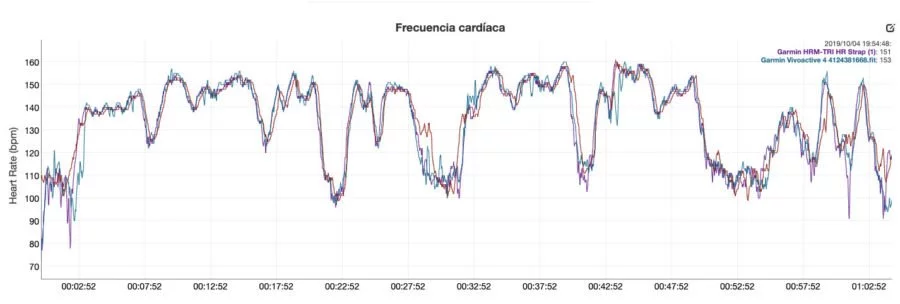
El inicio del entrenamiento es totalmente errático para los dos sensores ópticos, aunque al aumentar el ritmo todos se ponen a la par. El siguiente error notable no se vuelve a producir hasta el minuto 28, que es cuando paro a montar la luz frontal en la bici.
En cuanto retomo el entrenamiento, vuelta a la «normalidad» de los sensores ópticos. ¿Quiere decir esto que estaría cómodo usando sólo el sensor óptico en un entrenamiento de bici? Pues si no me queda más remedio, podría fiarme de los datos que aporta. Pero pudiendo elegir optaría siempre por el sensor en el pecho.
Garmin lleva haciendo un buen trabajo con el sensor óptico desde hace un tiempo. Actualmente es con el Garmin Elevate v3 con el sensor que mejor rendimiento estoy obteniendo, sobre todo en entrenamientos complicados como en días de series.
No es que los demás sean malos, están más o menos a la par, pero el sensor de Garmin destaca porque es el que tiene un retraso menor en los cambios de intensidad (aunque sigue existiendo dicho retraso).
Rendimiento GPS
Creo que ya se está convirtiendo en repetitivo, y supongo que seguiré recordándolo en todas las pruebas que queden por delante en este año 2019, pero he de añadirlo una vez más.
El Vivoactive 4 incorpora el último chipset GNSS de Sony. No es algo que sea especial, pues es el mismo chipset que monta la práctica totalidad (o incluso todos) de dispositivos que han llegado al mercado desde finales de 2018.
El motivo de esta dominación por parte de Sony es sencillo. Su consumo de batería tan bajo es clave para poder ofrecer las horas de autonomía que ofrecen ahora mismo todos los relojes, al menos cuando hablamos de uso con GPS encendido.
Este chipset incluye la posibilidad de usar la combinación de satélites que nosotros elijamos: sólo GPS, GPS + GLONASS o GPS + Galileo. De momento la recomendación es usar la opción de GPS + GLONASS, es la opción que Garmin ha trabajado con más ahínco y la que mejor resultado debe ofrecer. Sin embargo pronto la opción de GPS + Galileo debería ser igual o más satisfactoria.
Al igual que las pruebas del sensor óptico que has visto anteriormente, las comparativas de GPS se hacen de la misma manera: con los relojes acompañándome en mis entrenamientos habituales.
Llevando tanto el Vivoactive 4 como otros modelos, y comprobando dónde aparecen los problemas. No tengo ninguna ruta definida para establecer una puntuación por el sencillo motivo que hay otros factores externos que no debemos de olvidar nunca.
Cosas como nubes, hojas de los árboles o simplemente la posición del satélite pueden alterar los resultados del GPS de un día para otro. Es por este motivo por el que prefiero hacer este tipo de comparativas en lugar de tener un recorrido predefinido y valorarlo a partir de este.
Empiezo la comparativa con este entrenamiento de series con ida y vuelta sobre el mismo segmento del paseo marítimo (bueno, realmente de la zona de carretera del paseo marítimo).
Me ha gustado este entrenamiento no por las diferencias que se aprecian, sino por la consistencia en todo momento. Son tres modelos de Garmin los que estoy usando, los tres con el mismo chipset de Sony (y el Fenix 6 con la última actualización de GPS disponible) y sobre un trazado muy repetitivo.
En la bajada hay un ligero error, pero en el punto marcado en el que algunos pasan por encima de las casas todavía no había llegado al kilómetro de actividad, por lo que aún no habían obtenido la mejor señal posible.
Sin embargo en la zona donde he realizado las series de ida y vuelta no ha habido ni un sólo momento en el que ninguno de los tres haya realizado un track incorrecto.
No quiere decir que sea perfecto, porque si te fijas con todos los tracks de ida y vuelta (18 en total) se están cubriendo dos carriles de carretera, lo cual quiere decir que en alguna vuelta ha habido un par de metros de desviación, pero entra perfectamente en el margen de error que podemos esperar de cualquier reloj GPS.
Poco más que decir de ese entrenamiento salvo que no hay ninguna excursión fuera de la zona de paso. Así que vamos con otro diferente, un entreno suave sin excesivo ritmo. A velocidad más baja el GPS encuentra más problemas para mostrar un buen track.
Antes de ampliar la imagen ya podemos ver que hay un par de puntos en los que se ven diferencias, así que vamos a comenzar a hacer zoom para ver cuáles son las diferencias.
En esta imagen he señalado dos cosas diferentes. En primer lugar la gráfica del Suunto 9 totalmente recta, tanto en el giro inicial como un poco más adelante. No es que haya hecho la medición perfecta, al contrario. Llevaba tiempo sin usar el reloj, por lo que la caché de satélites no estaba actualizada y tardó mucho en coger señal. Claramente no tenía más de 4 satélites porque en cuanto comenzó el entrenamiento llegaron los problemas. No es que tenga ningún problema, simplemente hubiese necesitado más tiempo.
También he señalado un pequeño error del Vivoactive 4, desplazándose varios metros fuera del recorrido real, aunque rápidamente vuelve a unirse con los otros dos que sí están midiendo correctamente.
Pero a partir de ese punto del principio las cosas se normalizan perfectamente en los tres modelos.
Este punto es bueno para apreciar diferencias de comportamiento. En poco espacio realizo giros muy pronunciados y la zona de paso está muy delimitada, por lo que se puede ver perfectamente si alguno se ha ido fuera de la zona correcta.
En esta ocasión el Vivoactive 4 ha sido el más acertado. Salvo en la llegada al cruce del puente, donde se va ligeramente largo, el resto de giros es el que los completa de forma más acertada, siendo el Suunto 9 el que se muestra algo más irregular.
Ya en el camino de vuelta les pongo una situación algo más comprometida, corriendo bajo una fila de árboles bastante frondosa, algo que dificulta la recepción de señal.
Es aquí donde el Suunto 9 sufre muchísimo, pero viene ya inducido al error desde antes (desde que abandono el paseo marítimo). Mientras tanto ambos Garmin se comportan de forma más o menos correcta, con algún zigzag debido a la dificultad de la zona.
A partir de ese punto todo funciona de forma bastante correcta entre los tres relojes.
Vamos con otro día diferente en el que hago un recorrido bastante similar, pero con un punto interesante que te mostraré más adelante.
Día diferente, pero mismo cruce de puente. En esta ocasión el Vivoactive 4 ha sido ligeramente impreciso en la entrada hacia el puente, al igual que el Vantage M que también se ha ido bastante lejos de la subida hacia el cruce. En ese punto es el FR945 el que lo ha hecho perfecto. Una vez cruzado hay algún zigzagueo, pero en general los resultados son buenos por parte de los tres.
Más adelante es el Vivoactive 4 el que se pierde ligeramente, haciendo el recorrido en la primera flecha por encima del jardín de una de las urbanizaciones y siendo el único de los tres que lo hace.
En la segunda marca el Vivoactive 4 vuelve a mostrarse ligeramente impreciso, y se lleva consigo al FR945 (ambos en muñeca/mano izquierda). En cambio en todo ese tramo es el Vantage el que se muestra prácticamente 100% preciso.
Algo que sigue ocurriendo más adelante. El trazado correcto es el que marca el Vantage M, mientras tanto ambos relojes de Garmin se pierden, y el Vivoactive 4 se desvía bastante más al llegar a la rotonda.
A continuación te muestro la parte más interesante del entrenamiento. Aquí cruzo la carretera por un pasaje inferior, por lo que se pierde la señal de satélite totalmente. Lo interesante es ver cuanto tardan los relojes en recuperar la señal tras haberla perdido en un punto y aparecer segundos más tarde a varios metros de donde la perdieron.
He marcado el trazado real con la línea naranja, mostrando cuál es la entrada al pasaje subterráneo (la dirección de desplazamiento es de derecha a izquierda).
Puedes ver que ya el FR945 viene perdido desde un rato antes de entrar al pasaje, por lo que no es para tomar muy en cuenta lo que dice su recorrido… Pero el Vivoactive 4 también me trae hasta este punto corriendo por encima de los árboles un rato antes de alcanzar el punto de cruce, algo que no es normal por lo que hemos estado viendo hasta ahora.
Hasta el punto de entrada en el pequeño túnel el más preciso ha sido el Vantage M. ¿A la hora de la salida? Los tres tardan unos segundos en recuperar la señal, calculo que unos 4 o 5. Pero los tres lo hacen rápido y de forma correcta, sin hacer triangulaciones extrañas que nos desvíen de la ruta retal decenas o centenas de metros, que es lo que puede desvirtuar totalmente los datos de un entrenamiento (porque añada 300 metros de mas en pérdidas de satélite de este tipo).
En definitiva, buen comportamiento de los tres relojes a la hora de recuperar la señal de satélite, independientemente de que alguno lo haya hecho un segundo antes que el otro.
Por último comentar brevemente un entrenamiento de ciclismo.
Como suele ser habitual no hay mayor problema al montar en bici. La velocidad es bastante mayor, por lo que las gráficas aparecen mucho más certeras al haber menos zigzagueo.
Siempre van a aparecer algunos puntos en los que habrá pequeñas discrepancias de un metro a izquierda o derecha, pero también tiene que ver si el reloj va en la muñeca izquierda o derecha. Ya en eso tenemos casi 50cm de diferencia, que sumando un pequeño error de 20 o 30 cm nos supone alrededor de un metro de separación. Y, sin embargo, en la práctica totalidad del entrenamiento las gráficas están perfectamente superpuestas.
En general las gráficas que hemos estado viendo hasta ahora es similar a todo lo que he estado viendo en otros entrenamientos con el Vivoactive 4.
En la mayor parte del tiempo los resultados buenos. Hay puntos en los que hay ligeros errores, pero no veo errores recurrentes o grandes fallos. La típica salida de la ruta, pero con retorno rápido al trazado real, incluyendo en zonas complicadas con edificios o árboles.
Pero creo que para la inmensa mayoría de usuarios el resultado obtenido es más que aceptable.
Comprar Garmin Vivoactive 4
Espero que este análisis completo te haya ayudado a decidir si es un dispositivo válido para ti o no. Todo el trabajo que realizo puedes consultarlo sin ningún tipo de coste, pero si quieres apoyar la web y con ello el trabajo que realizo, la mejor forma de hacerlo es comprar tu nuevo dispositivo a través de los enlaces que facilito a continuación. Y si no lo compras hoy, ¡acuérdate de pasar por aquí cuando vayas a hacerlo!
A través de estos enlaces no sólo conseguirás un precio muy competitivo y la mejor atención al cliente, sino que además yo recibiré un pequeño porcentaje sin que a ti te cueste ningún desembolso adicional. Eso es lo que permite que pueda seguir ofreciéndote pruebas como esta en la página.
No lo vas a comprar, ya lo tienes o Amazon no es una opción; ¿pero te gustan las pruebas que realizo y quieres mostrar tu apoyo a la página? Entonces considera suscribirte como miembro VIP. Por encima de todo estarás ayudando a soportar la página, pero además disfrutarás de beneficios exclusivos.
Si tienes dudas, recuerda que tienes la sección de comentarios en la parte inferior. Responderé a todas tus preguntas tan pronto pase por aquí.
Opinión Garmin Vivoactive 4
El Garmin Vivoactive 4 es una pequeña evolución del 3. Y remarco lo de evolución, porque no hay grandes cambios en el reloj. Es cierto que ahora hay dos tamaños que harán que puedas encontrar una versión que se adapte mejor a lo que buscas, y que todas las versiones incluyen música; pero ninguno de sus principales reclamos es un salto importante con respecto al modelo anterior.
No quiere decir que se trate de un mal reloj ni mucho menos. De hecho a la hora de buscar puntos negativos para que figuren en el resumen no conseguía encontrar muchos, más allá de los problemas de batería que tenía en reposo y que Garmin solucionó tras una actualización de software.
Su principal competidor va a estar en su propia casa, y es que a la hora de elegir seguro que a muchos les surja la duda de optar por el Vivoactive 4 o por el Forerunner 245. Es una duda legítima, porque ambos tienen un precio muy similar y en algunos aspectos el Vivoactive 4 es superior: cuenta con altímetro (no sólo para actividades sino también para contar pisos ascendidos), métricas de sudoración e hidratación, tasa de respiración, Garmin Pay…
Entonces, ¿qué es lo que no tiene el Vivoactive 4 que sí está presente en el FR245? Pues principalmente todas las métricas avanzadas de entrenamiento (dinámica de carrera, estado de entrenamiento, Training Effect, etc.) y navegación de rutas.
Así que si eres un usuario que lo que busca principalmente es el rendimiento deportivo, el FR245 tiene ese plus de funciones que no está disponible en el Vivoactive 4. Pero en caso contrario vas a encontrar funciones más interesantes para tu día a día en este nuevo modelo de Vivoactive.
De cualquier manera creo que Garmin ha conseguido situar al Vivoactive 4 en el punto exacto para el que busca un reloj de este tipo. Es un modelo que satisfará a la inmensa mayoría de personas que hagan deporte (ya sea corriendo, en bici o lo que sea) pero que no entrenen con el objetivo de competir. El rendimiento GPS es bueno en cualquier uso y el sensor de pulso óptico muestra muy buenas gráficas (con ligeros errores, pero muy válido en todo momento).
Y todo ello sin olvidar que estamos ante un reloj inteligente (o ligeramente inteligente) con buena autonomía, pantalla siempre encendida y capacidad de reproducir música o sincronizar con plataformas como Spotify y Amazon.
Ya sabes que si tienes alguna otra pregunta que no se haya respondido en la prueba, tienes los comentarios más abajo. Y con eso… ¡gracias por leer!

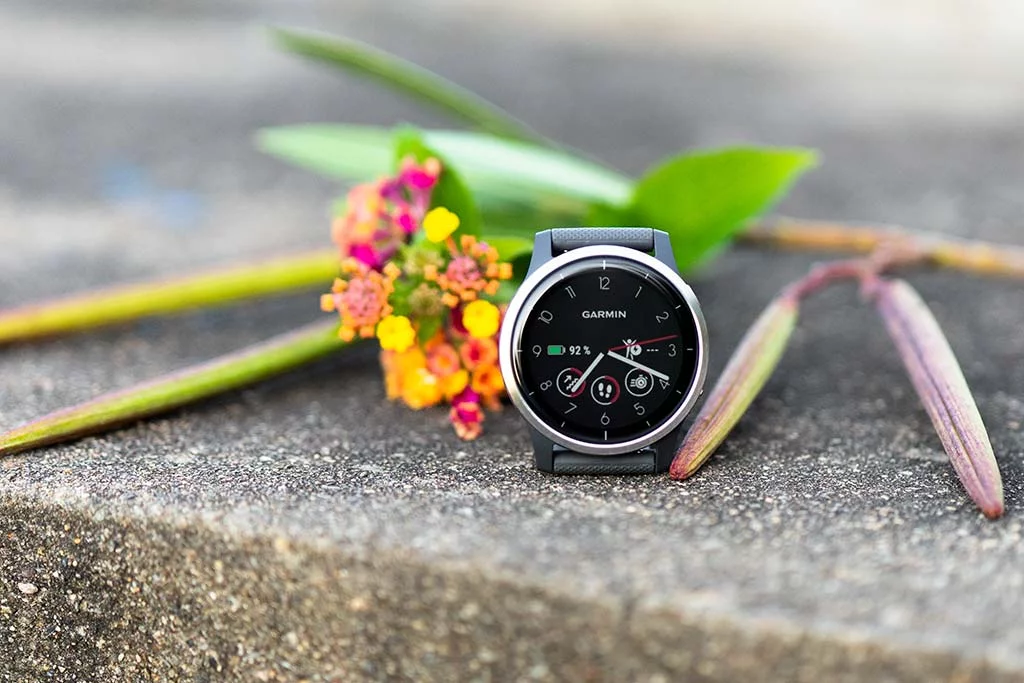
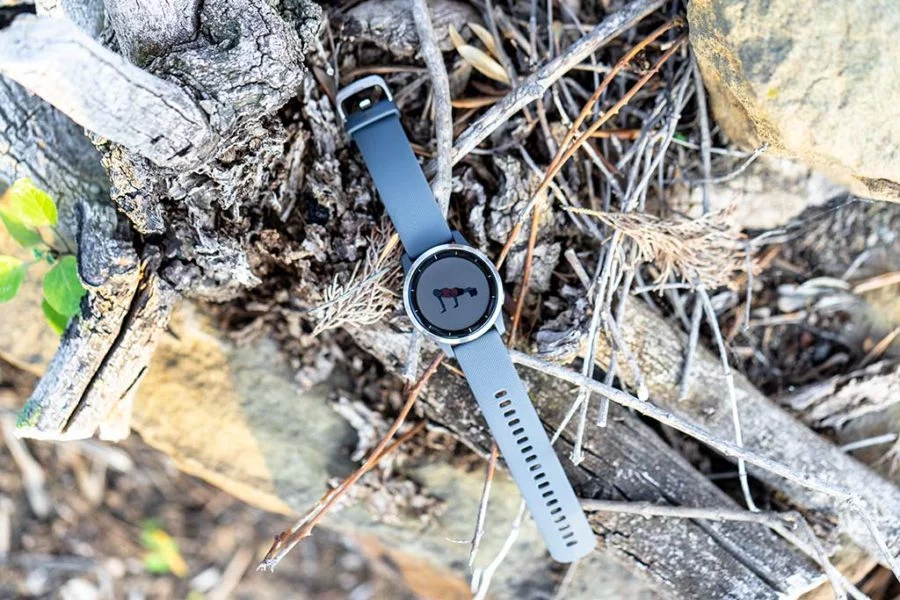








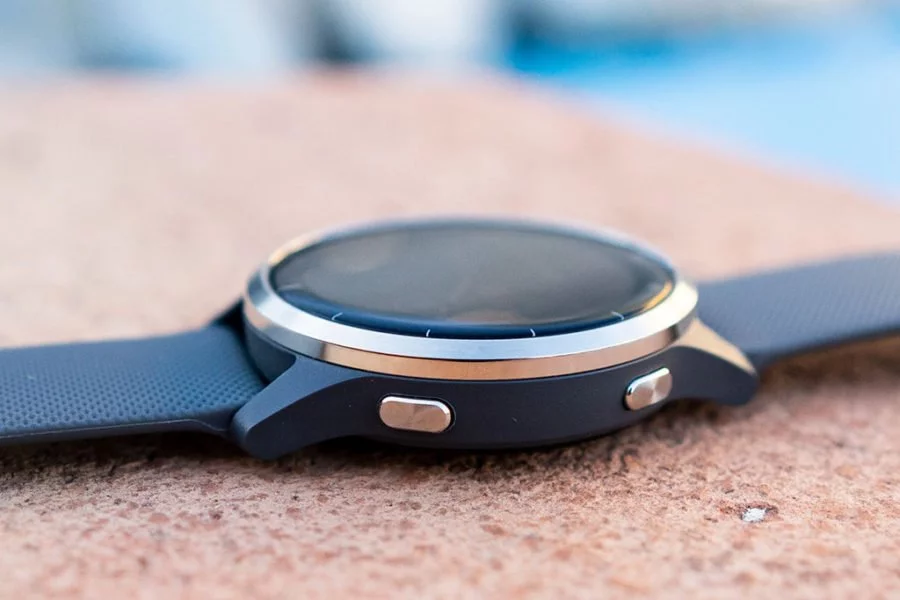
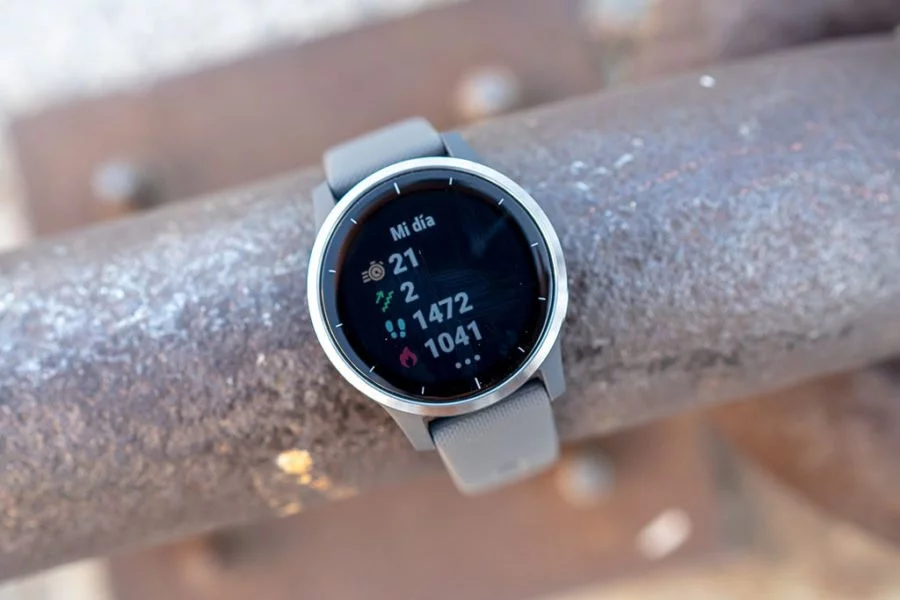
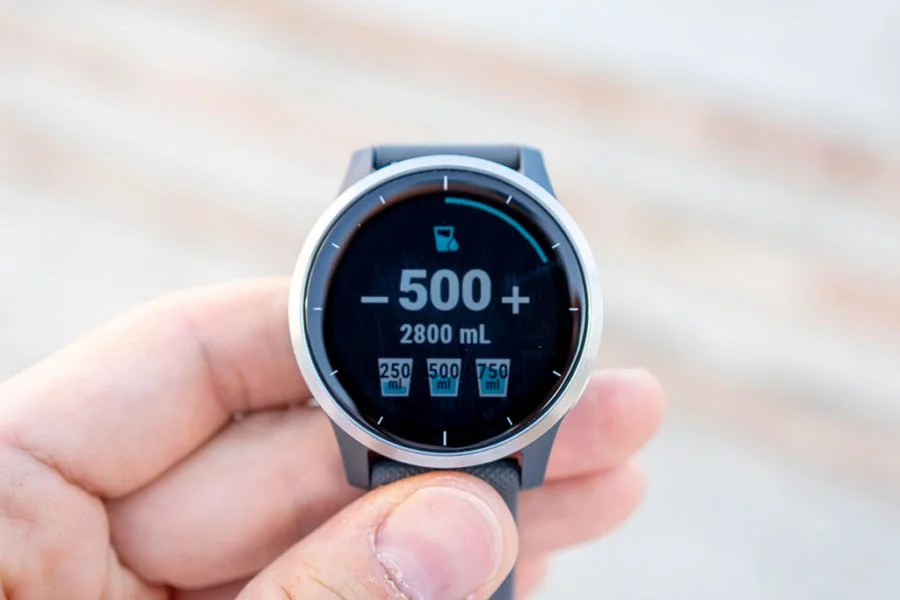
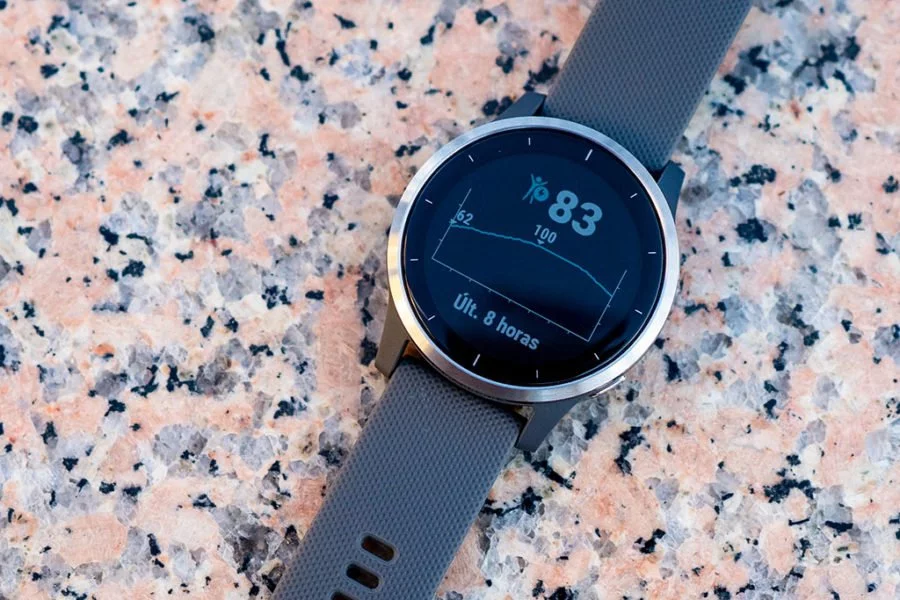
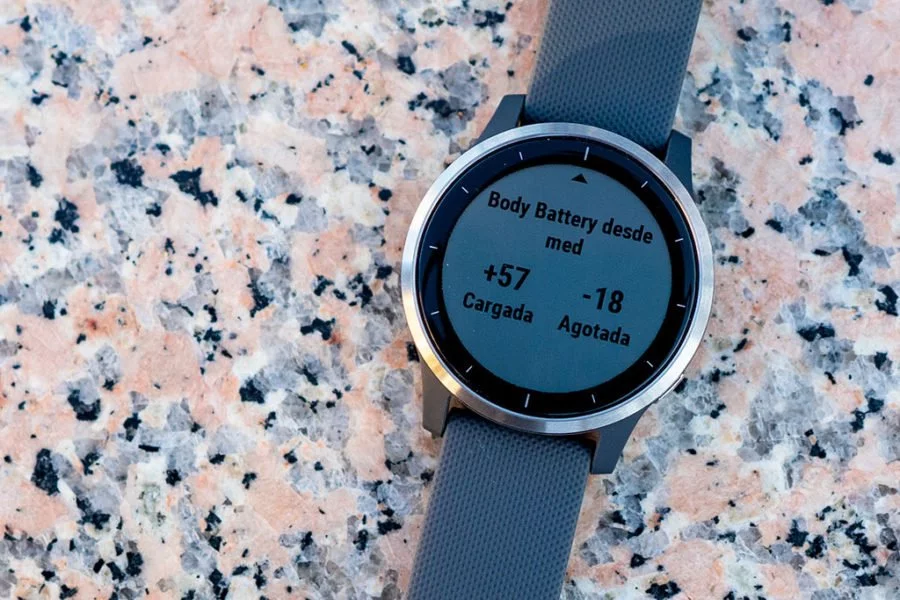
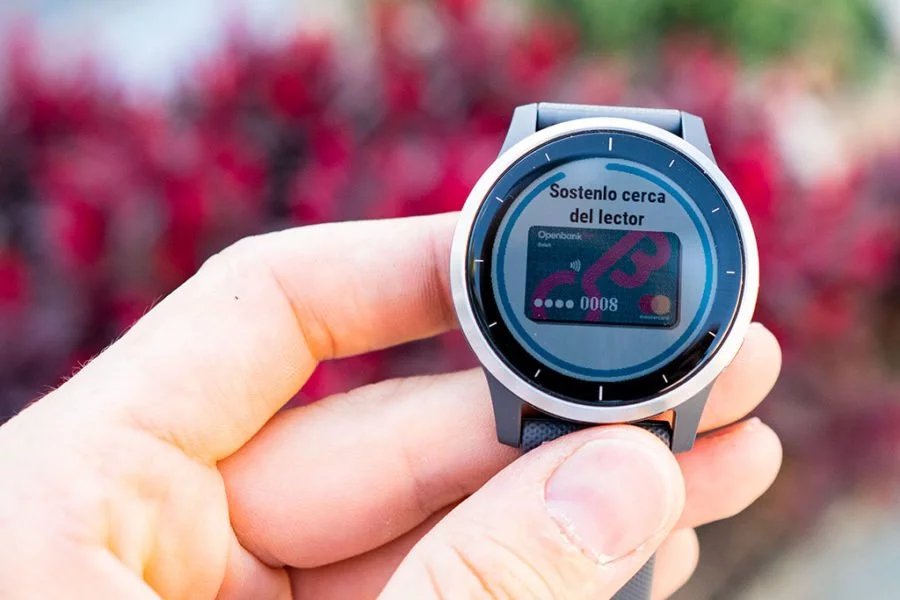
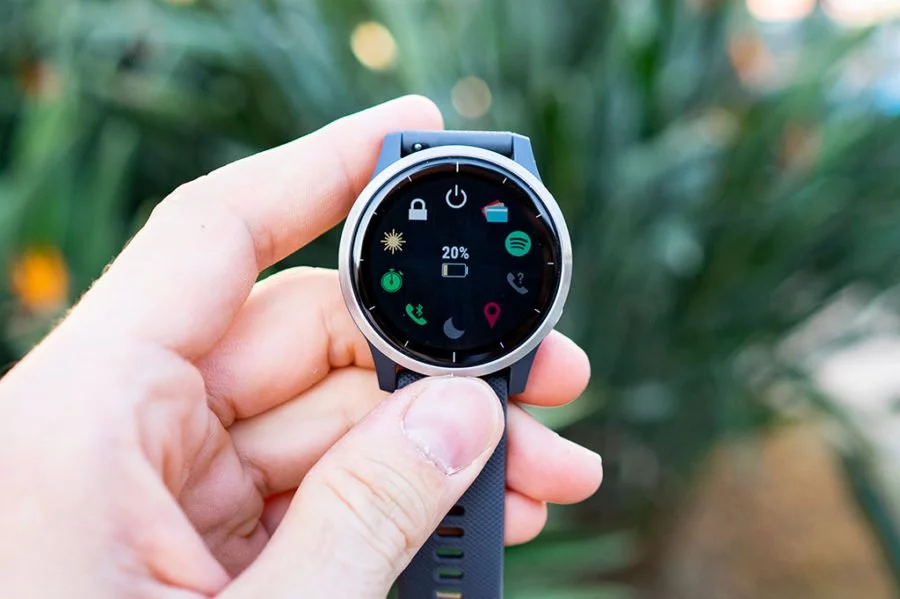
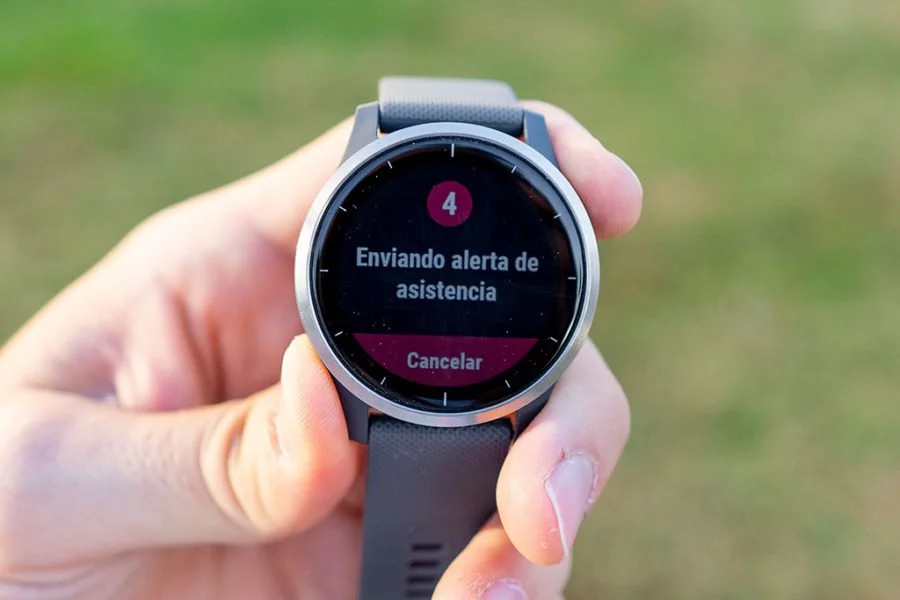

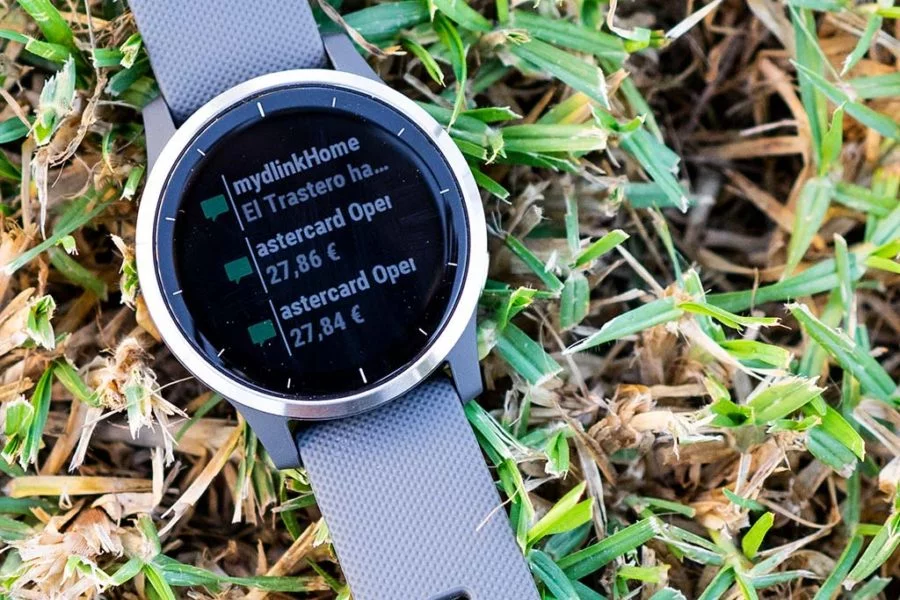
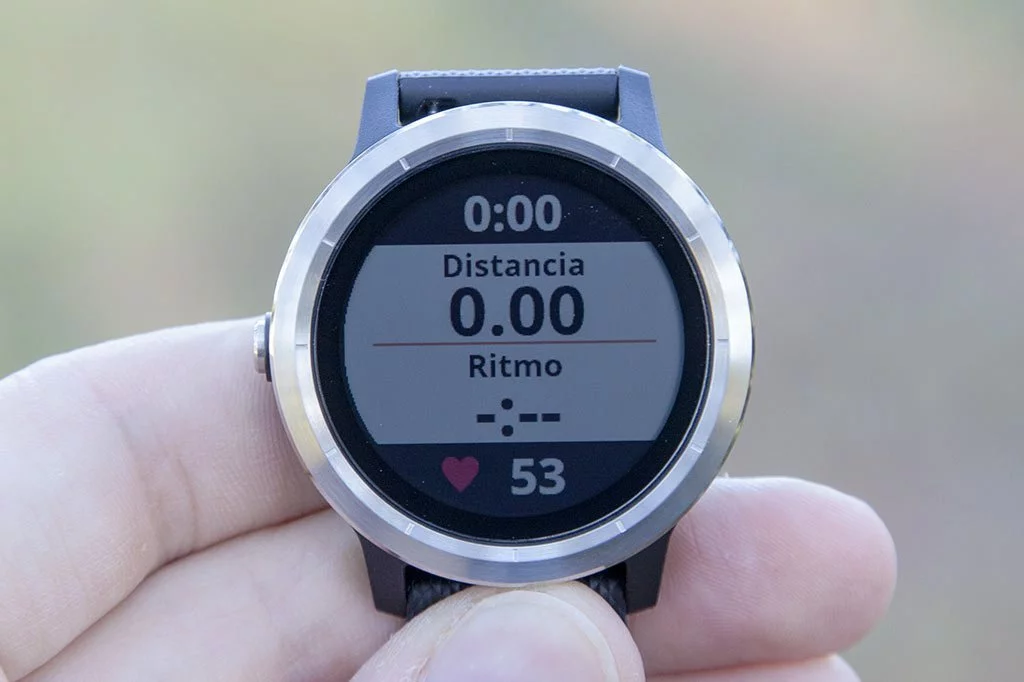
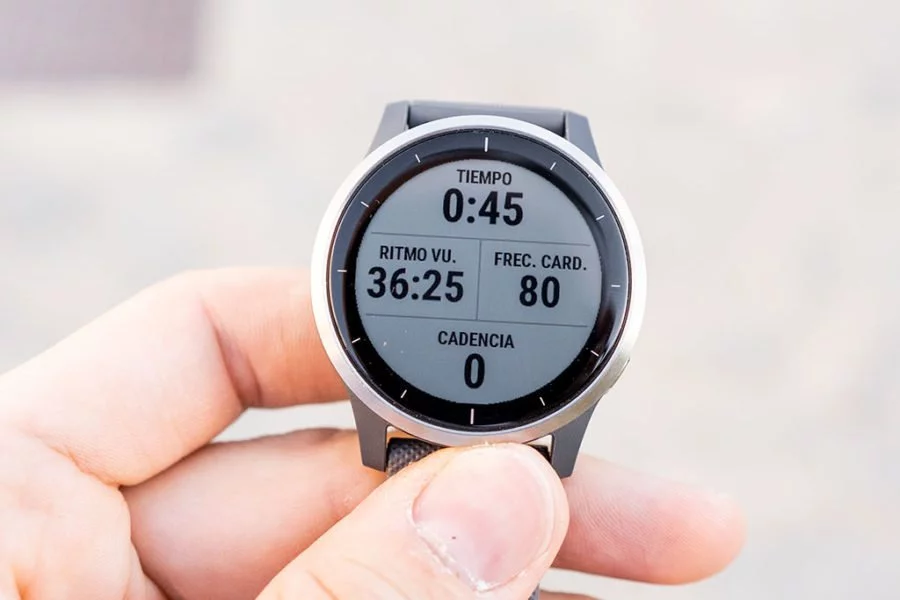

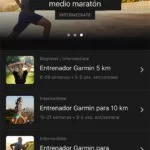
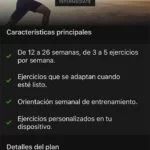








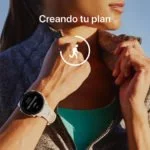

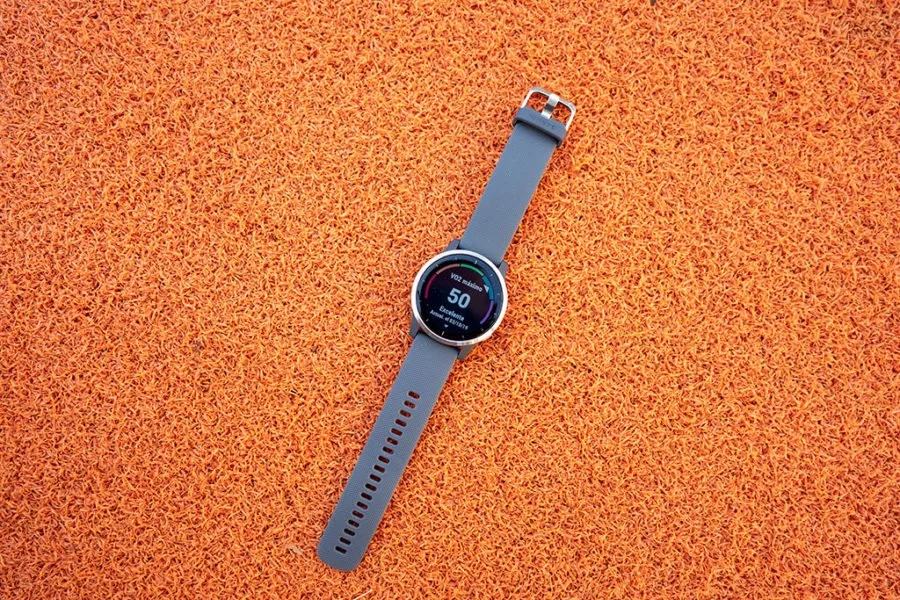
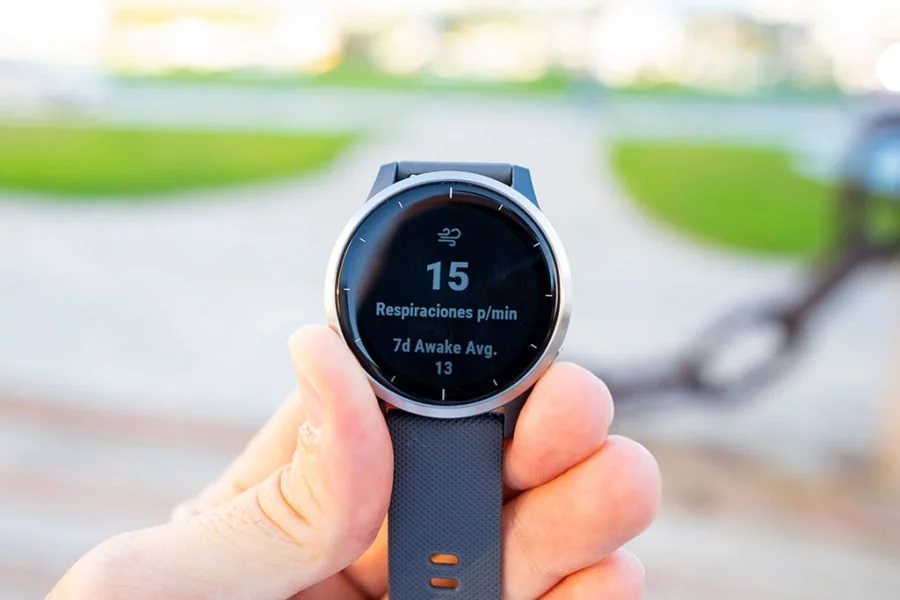
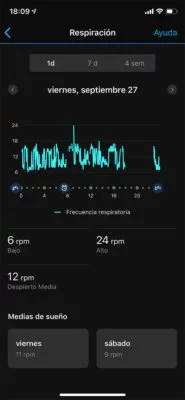
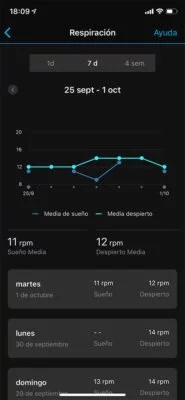
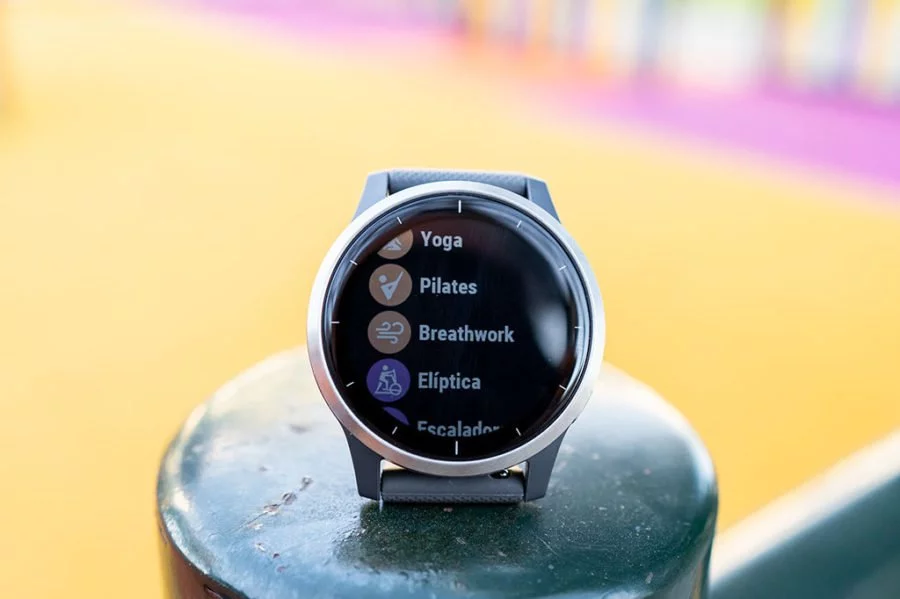
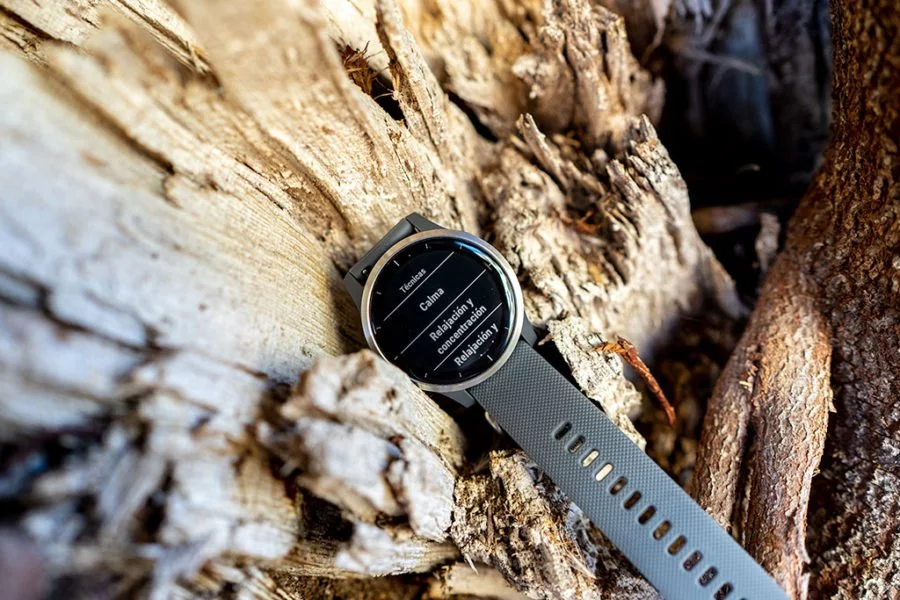
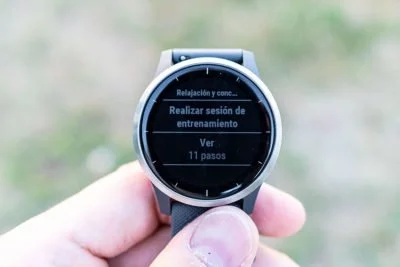
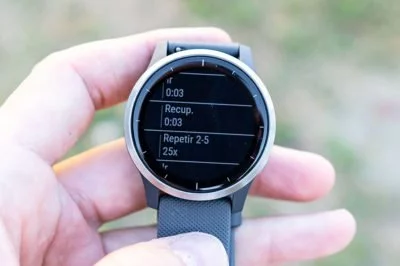
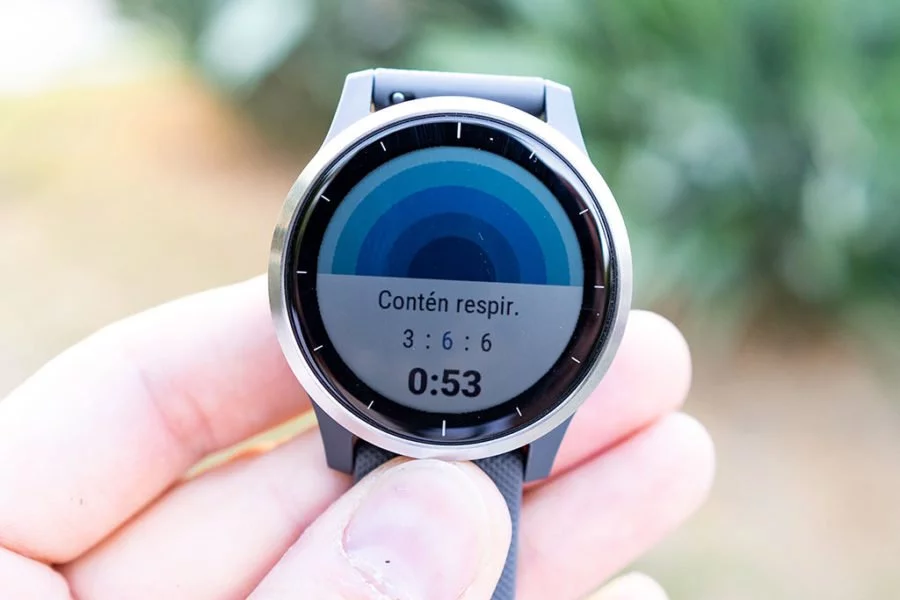
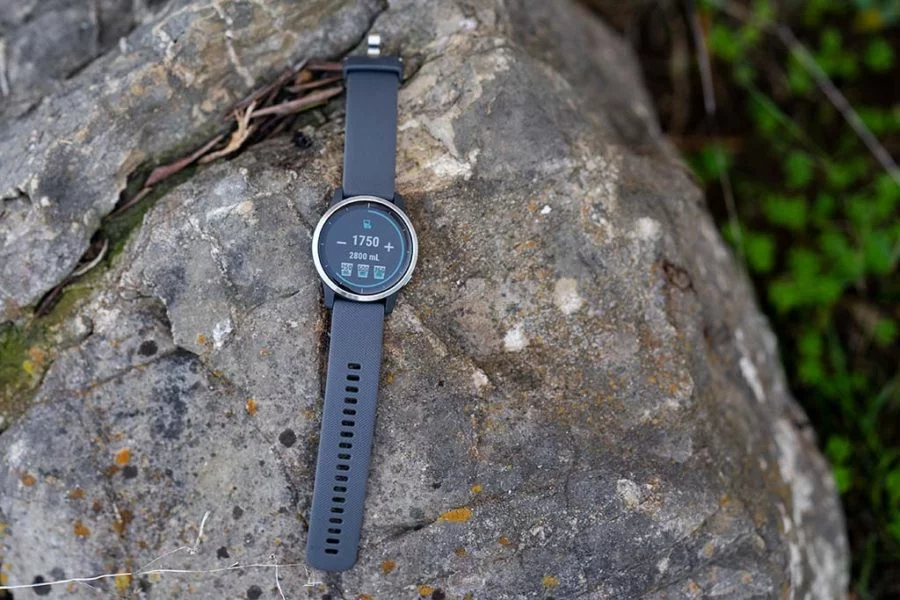
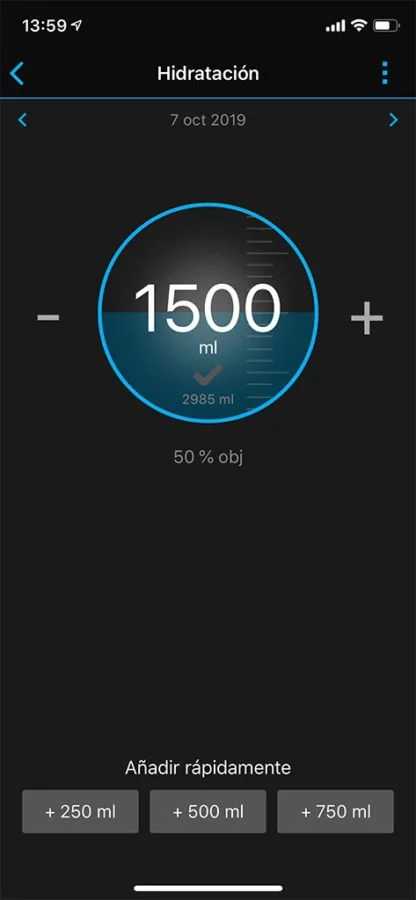
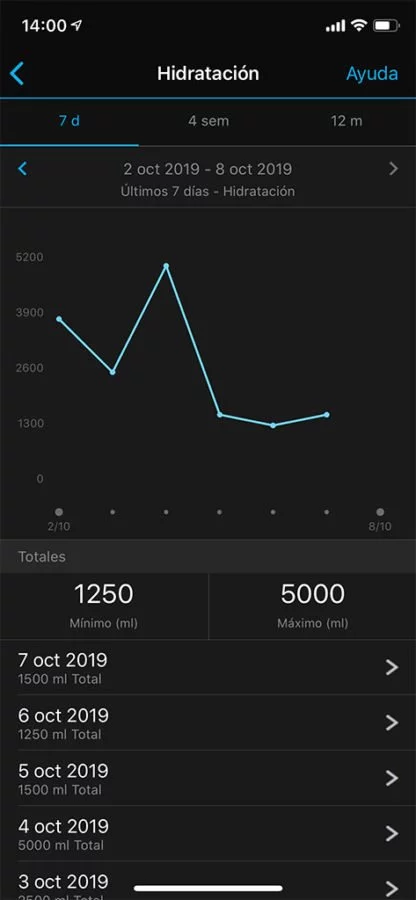
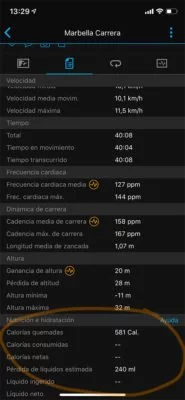
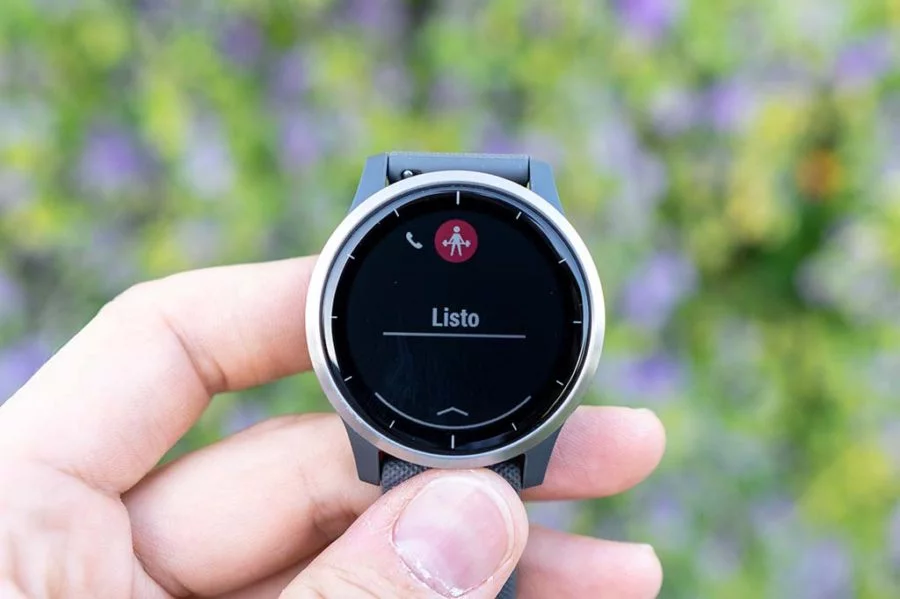
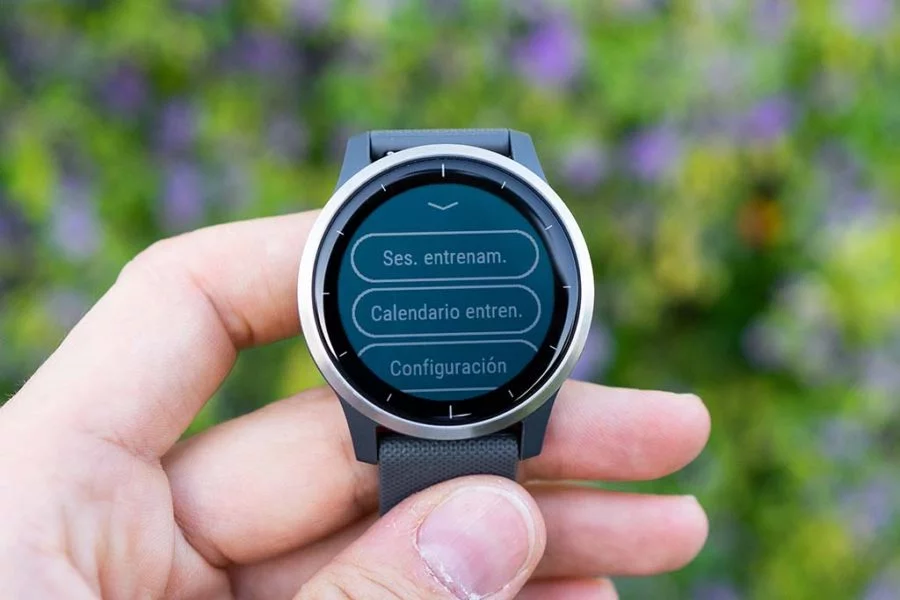
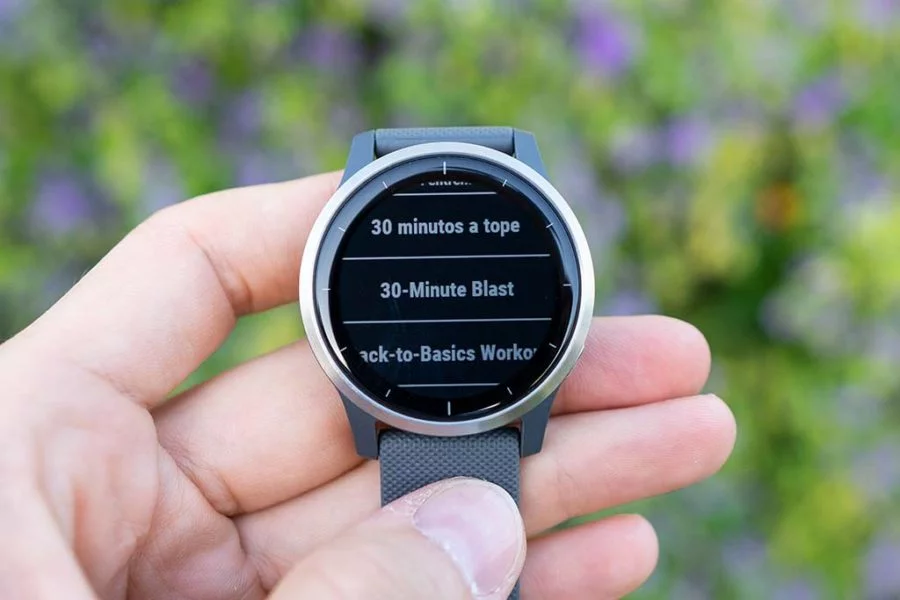
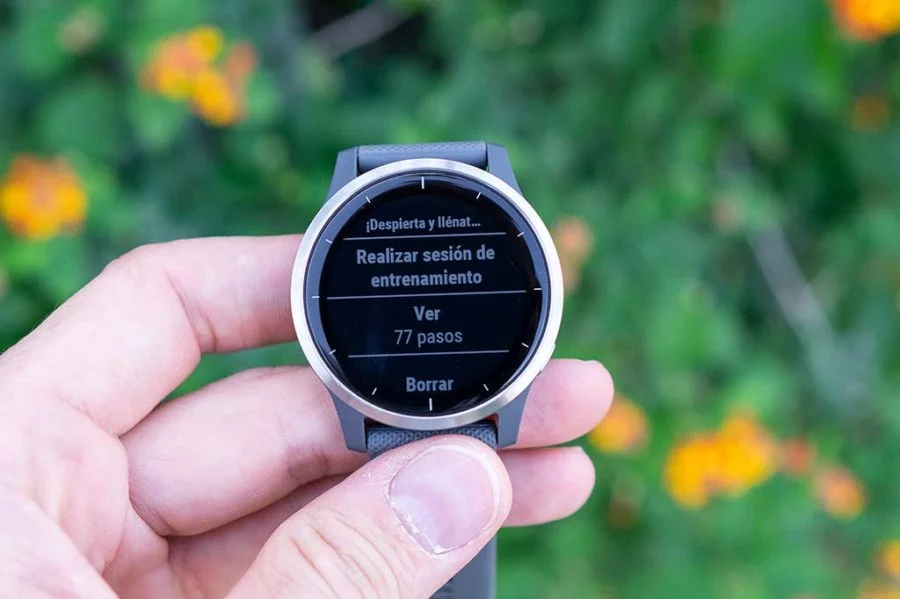
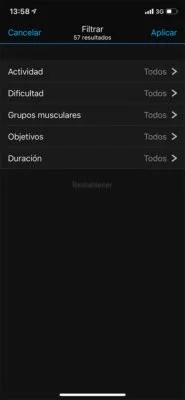

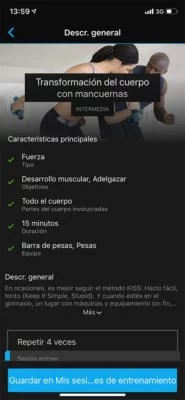

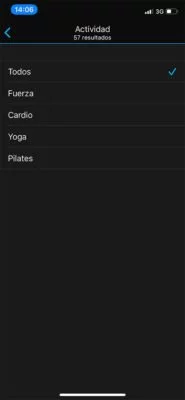

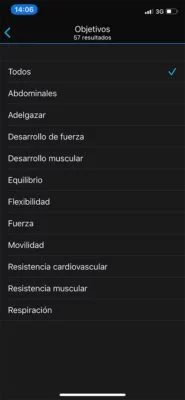

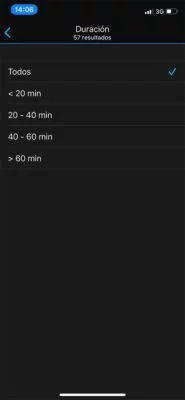
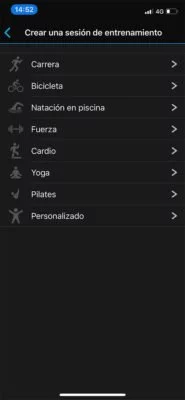
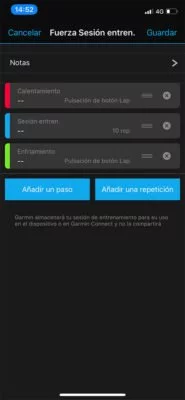
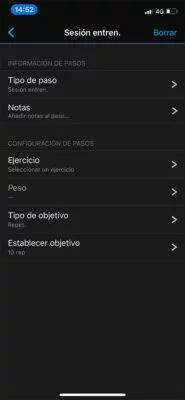
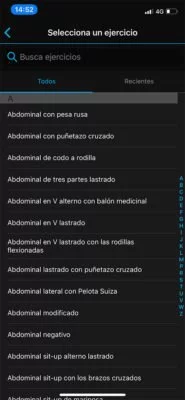
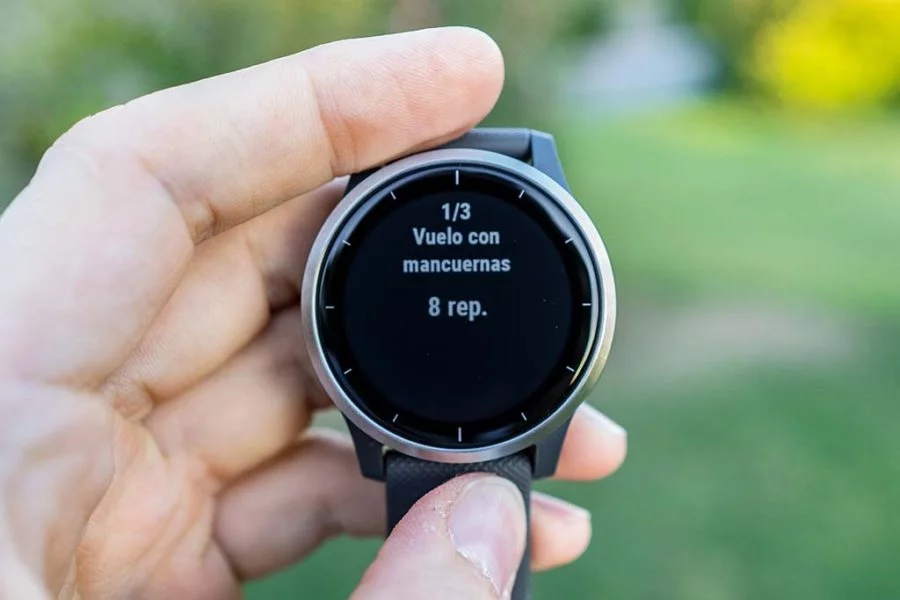
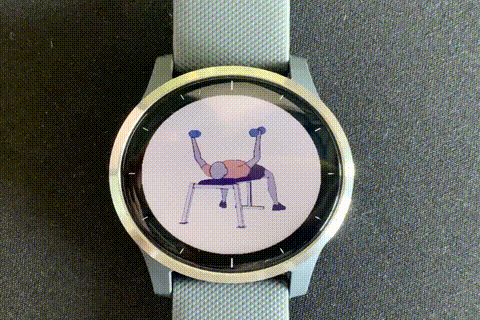
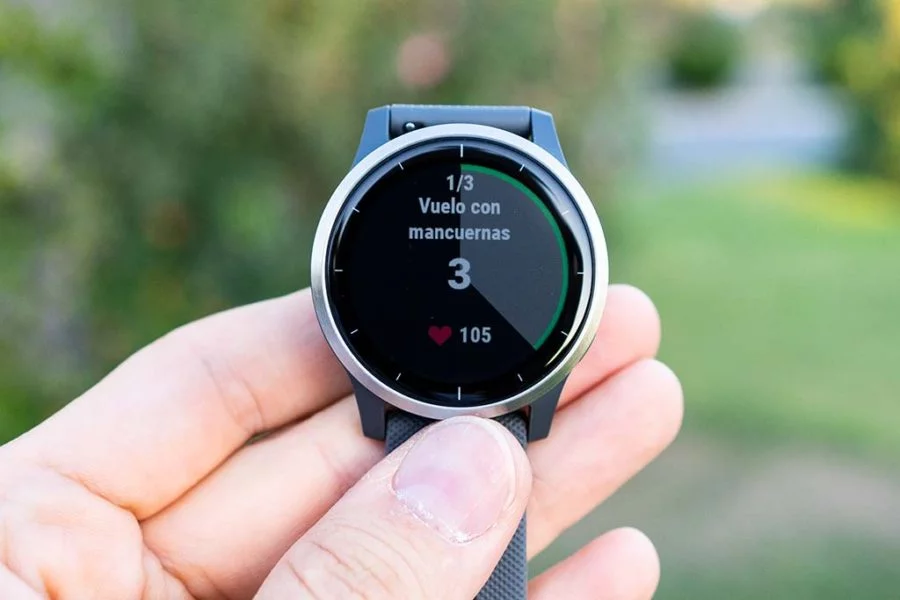
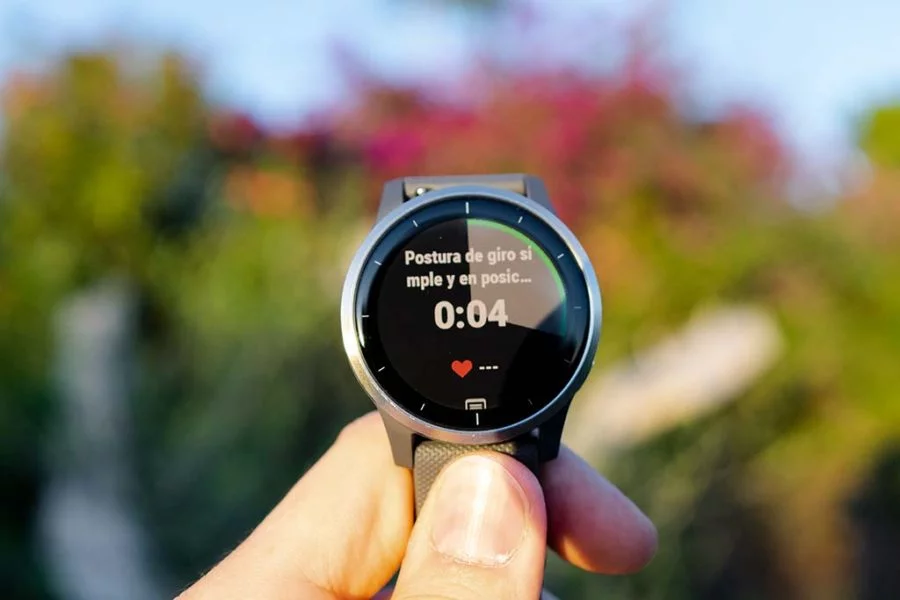
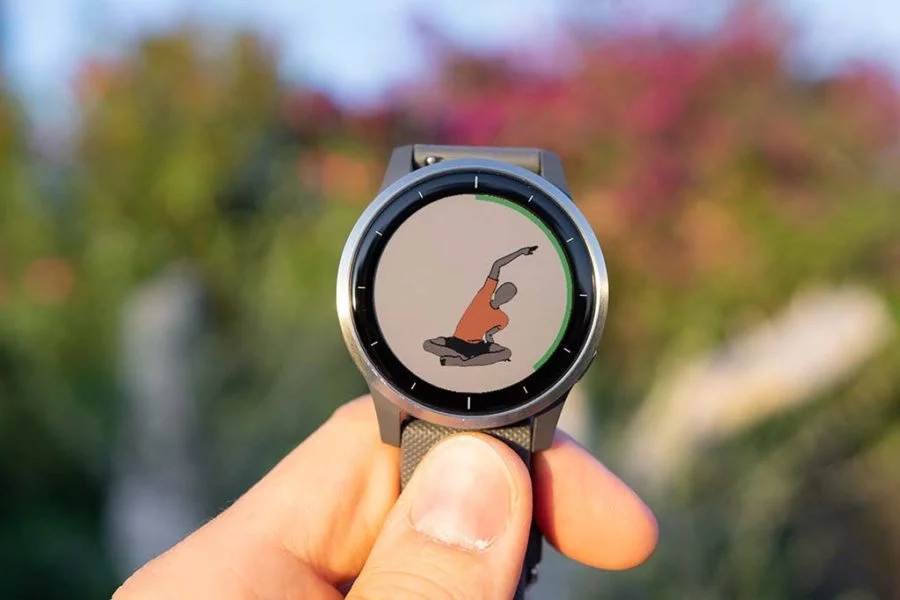
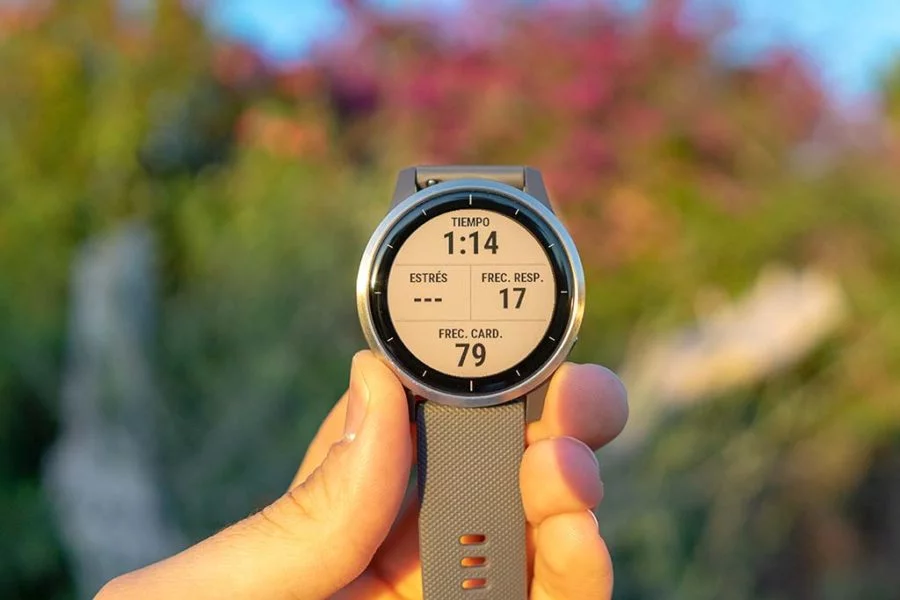
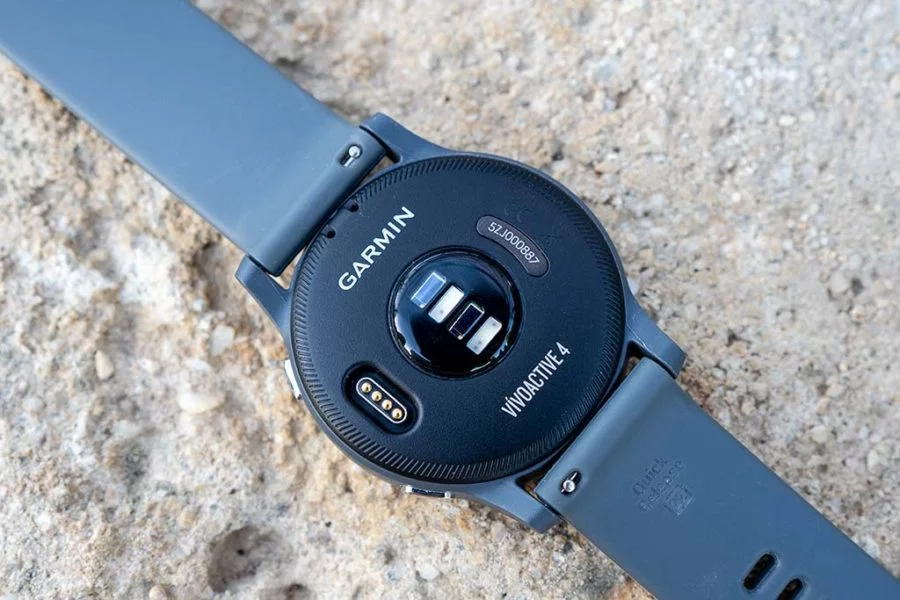
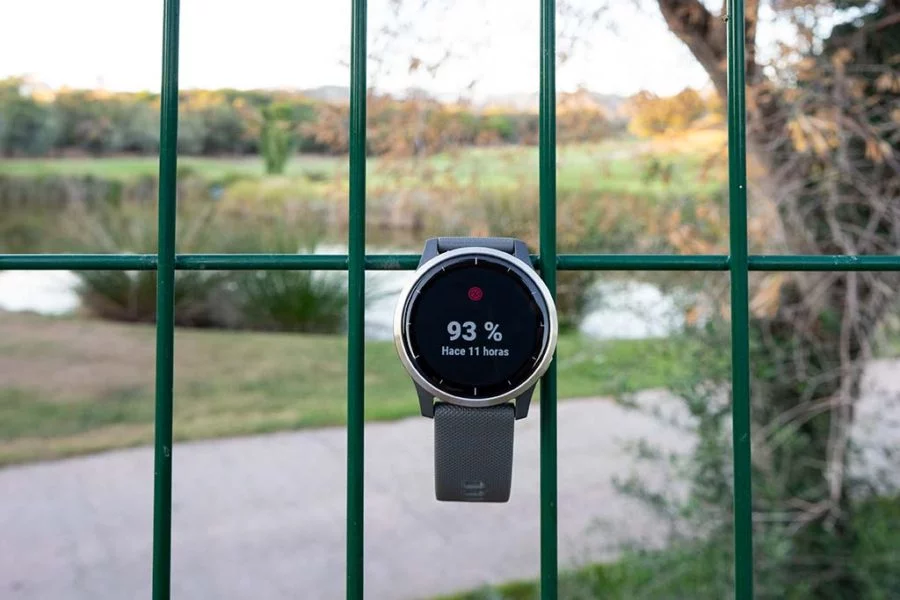
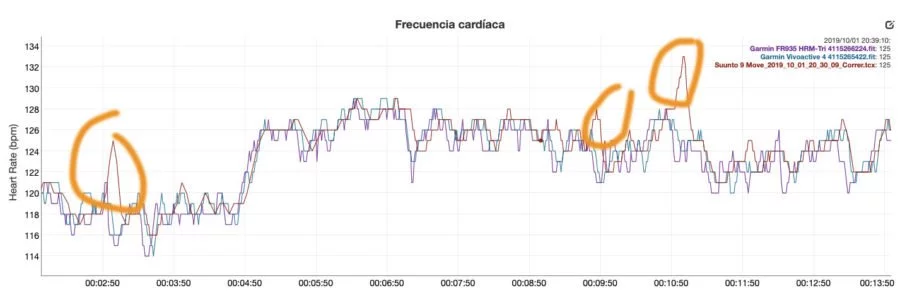


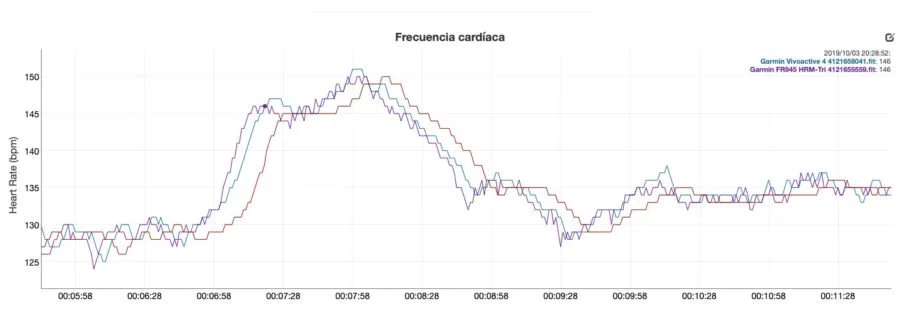
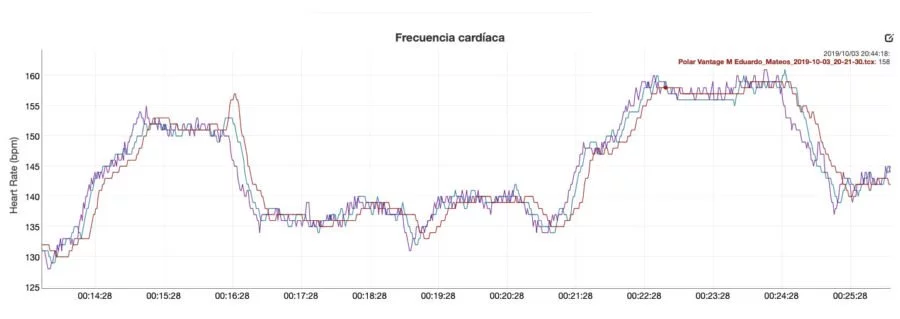



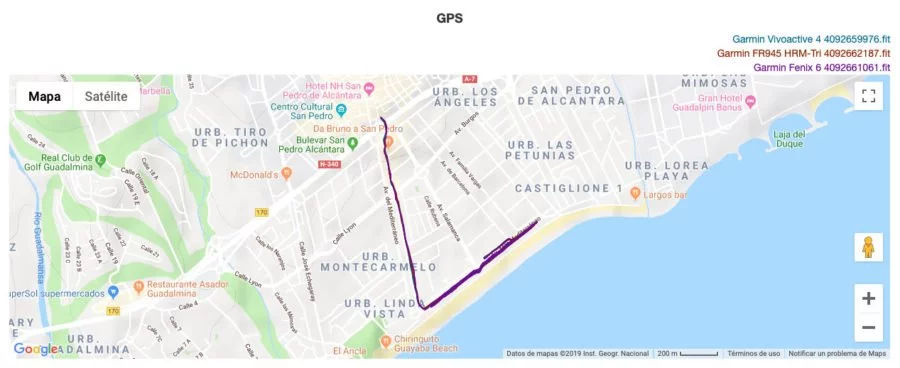
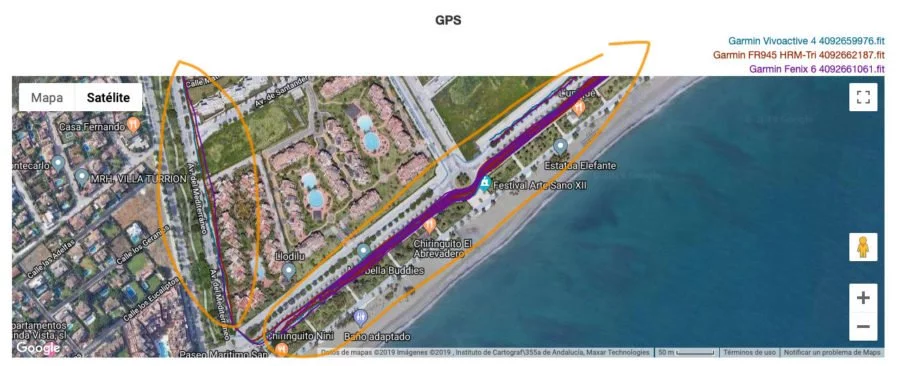
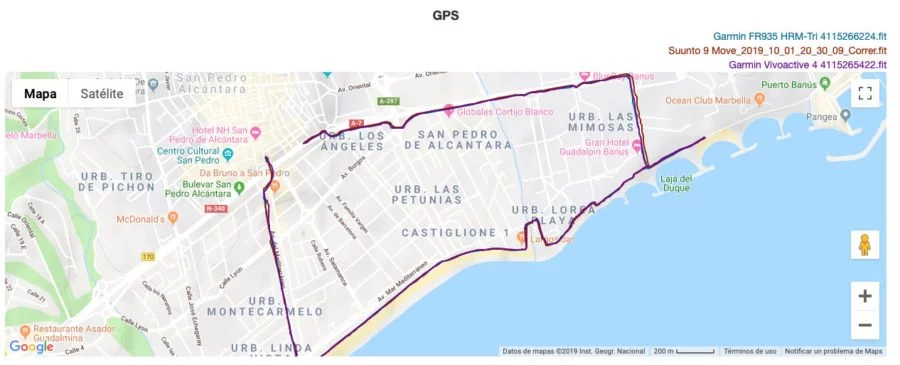

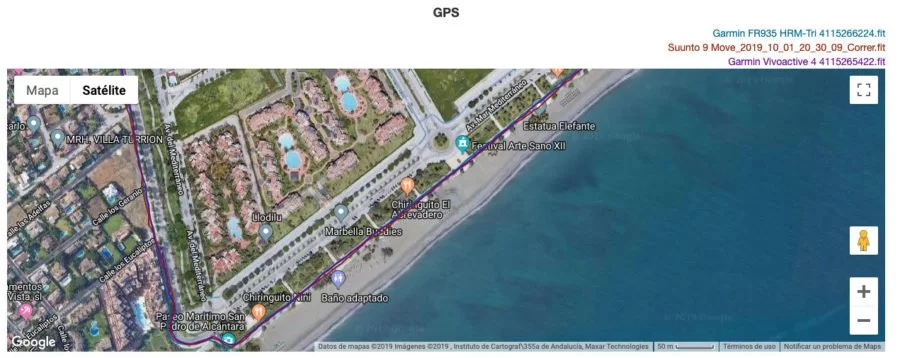
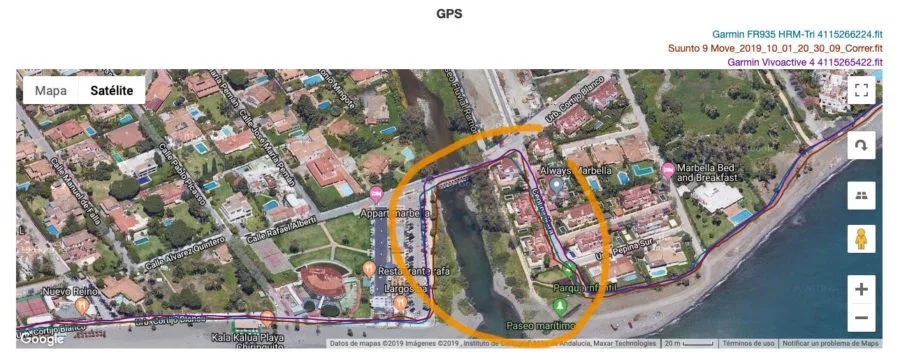
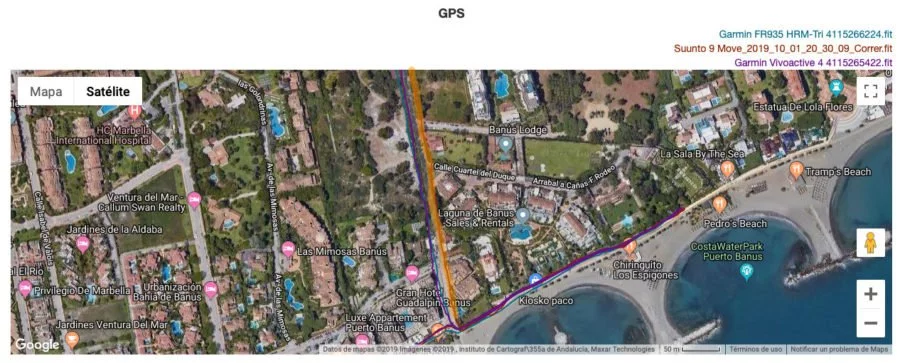
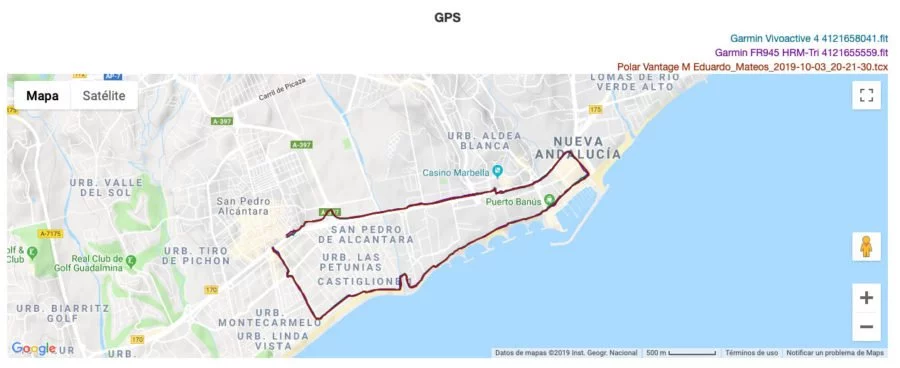
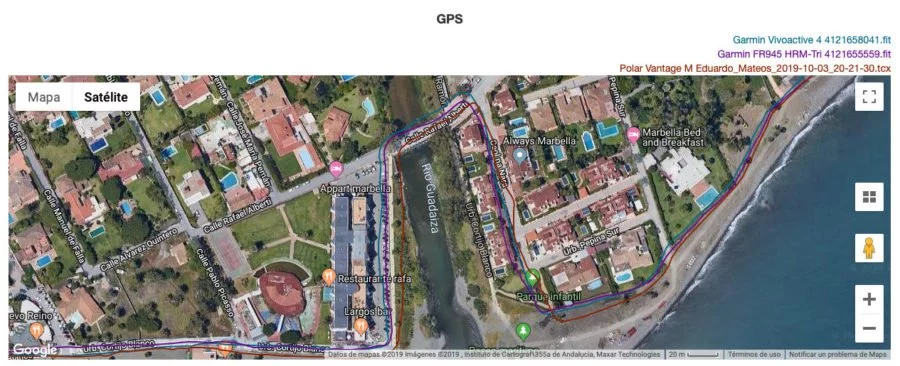
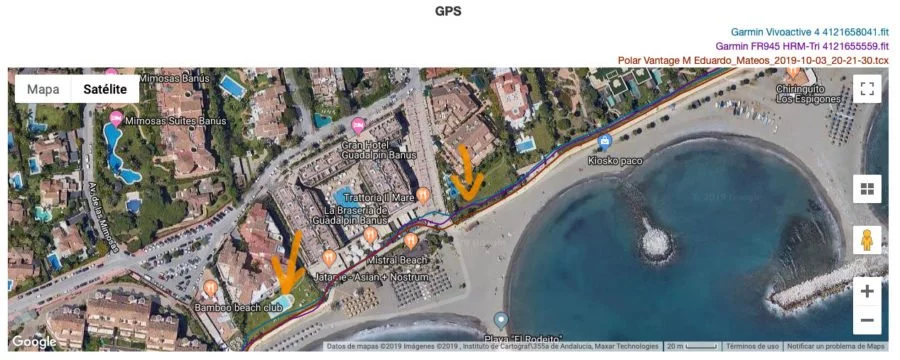
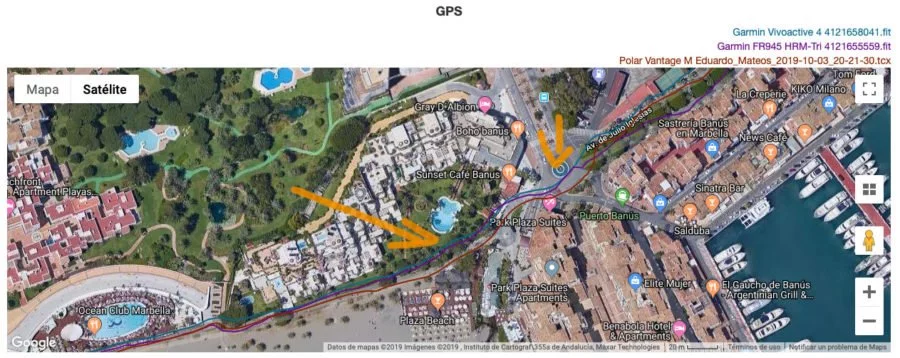
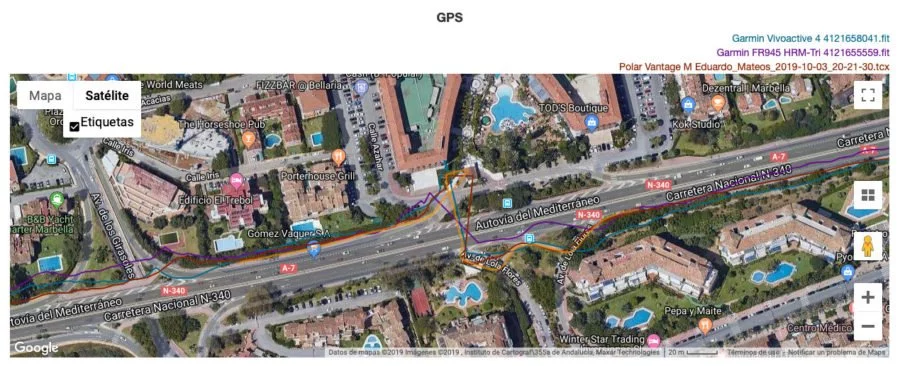


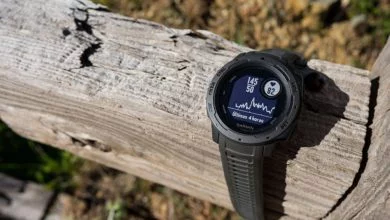
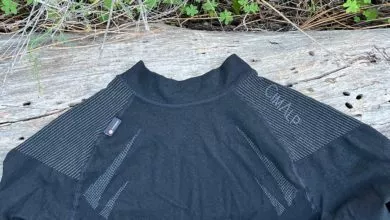

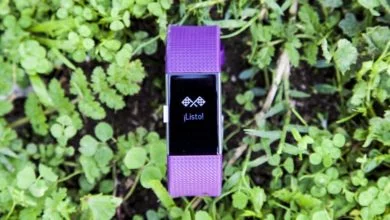
felicidades por el articulo.
Brutal como siempre.
Yo quiero navegación de rutas y altimetro barométrico, pero no puedo pagar lo que vale el Fenix????.
A ver si por el Black Friday sale algun bombazo
Gracias David.
Tienes otra opción, como por ejemplo el Forerunner 935…
Buenos días,
Primero felicitarte x la review, de las más completas q he visto, y me has resuelto un montón de dudas con las fotos y comentarios (sobre todo de la opción de carrera, q es la q más me interesa), con respecto a la carrera, quería preguntarte si crees q con alguna actualización en el futuro podrían incluir las opciones avanzadas de running q tienen en los Forerunner, o no tienen los sensores necesarios???
Muchas gracias.
Saludos.
Gracias Dani.
No, esas funciones no llegarán. No es cuestión de sensores, son prestaciones licenciadas de Firstbeat y como tal Garmin tiene que pagar un canon por unidad en cada reloj que vendan y que lo incluya.
Independientemente de eso, son funciones que en Garmin reservan para los modelos Forerunner.
Muchísimas gracias Eduardo, lo estaba esperando con ganas!!
En los próximos días lo pido, por supuesto desde tus enlaces.
Gracias Hugo
Gracias Eduardo por este estupendo analisis!
Qué tal la bateria? Te ha llegado a los 7/8 días que promete Garmin? Hay muchas quejas sobre esto, pero se supone que se corrige con una actualización… Es cierto?
Otra cosa, tiene alguna aplicación para linterna? Lo has probado para natación en piscina? Gracias por estos apuntes… Por supuesto cuando lo pida lo haré a través de estos enlaces y animo a que el resto también lo haga!
Yo he llegado a casi 5 días con PulseOx por la noche y unas algunas horas de GPS. Los 8 días que promete Garmin es «hasta», que es simplemente encendido sin nada más.
Hubo un problema de consumo de batería en reposo, pero se solucionó ya con una de las actualizaciones.
Sí tiene función de linterna, que se puede configurar para tener la opción en el menú rápido o desde el acceso rápido deslizando a la derecha.
He nadado en piscina, sin ningún problema como cualquier otro Garmin. Lo único que no tiene es la posibilidad de registrar ejercicios de técnica o similar, añadiendo los metros a posteriori.
¡Y gracias por hacer los pedidos a través de los enlaces!
Muchas gracias Eduardo por el completo análisis!
A mí me gustaría saber el consumo aproximado de batería haciendo uso de gps y música (bluetooth) ya que será mi principal uso…
Muchas gracias de nuevo!
Máximo 6 horas, suponiendo que terminas de cargarlo y haces una salida directamente. A la hora de la verdad ese tiempo se va a reducir porque si lo usas durante el resto del día con frecuencia cardíaca, notificaciones, etc., el total de autonomía disponible va a disminuir. Con uso general y GPS+música calcula alrededor de 5 horas de entrenamiento.
Y un perfil para futbol sala?
No, no hay perfil de fútbol para el reloj, tendrás que usar cualquiera de los disponibles con uso de GPS.
Edu, como siempre un análisis espectacular. Pero tengo una o varias dudas. Me gustaría que me aconsejaras sobre que reloj tener. Mi problema es que hace 4 meses me han puesto una prótesis de cadera total, y ahora el correr se acabó, pero no la natación, el ciclismo en sala (spinning)y el gym, utilizaría el GPS para las caminatas, pero me interesan las métricas de natación, spinning y gym, y la verdad que no sé si decidirme por el vivoactive 4 o por el vantageM, y más ahora que sé que en octubre vienen las actualizaciones del polar, con con las métricas nuevas del ignate. La verdad es que tengo dudas y se acerca mi cumple, podrías hacer una comparativa de natación con el Garmin y el polar. Muchas gracias Edu, espero no ser un pesado con mis dudas. Gracias, no Muchísimas gracias.
Lo que va a llegar al Vantage M está enfocado al control del entrenamiento, enfocado a competición y a tener un entrenamiento acorde. No sé si es lo que estarás buscando.
Creo que para tu tipo de uso multideporte, pero sin focalizar en nada concreto, el Vivoactive se ajusta mejor.
Gracias Edu por tu respuesta, he estado mirando las especificaciones y hay algo que no entiendo y que espero que tu me saques de dudas.
TIEMPO DE DESCANSO BÁSICO (DESDE 0)
ALERTAS DE TIEMPO Y DISTANCIA
Esto esta en funciones de natacion y no se que significa.
Una cosa mas con el vivoactive4 podre crear entrenos de natacion en garmin connect y ejecutarlos en la piscina.
Muchisimas gracias Edu.
Tiempo de descanso supongo que se refiere a cuando pulsas el botón de lap y creas un bloque de descanso. No es una pausa, porque sigue contando el tiempo, es un descanso.
Las alertas se pueden programar para que el reloj vibre cuando has superado una distancia o tiempo determinado.
muchas gracias por la review. Gran trabajo el tuyo. Yo era de los que dudaban entre el 245 y el 4… creo que este último me va más pues tampoco soy un runner que se diga. Eso si, teniendo en cuenta que no tengo un duro la elección es fácil: ninguno 🙂
Un saludo
Gracias Javi
Para natación, running, bici, remo y pesas cuál te parece mejor? El Polar Ignite, el Vivoactive 4 o el Forerunner 245?
El Vivoactive 4, por la sencilla razón que es el único que tiene métricas específicas para remo.
Tambien te digo que es remo indoor. ¿No crees que con el perfil genérico de cardio se podrían abarcar estas actividades?
Spinning o ciclo indoor sí tiene el 245 no?
Gracias Eduardo por la respuesta rápida, no esta mal 5 días de batería para estar conectado con el teléfono.
En cuanto a la natación, si que reconoce estilos automáticamente no? Lo único que no puedes es registrarlos de manera manual entiendo… Al final lo que me interesa es saber los metros nadados en cada estilo. El 245 mejora en este aspecto?
Gracias de nuevo!
Sí, reconoce estilos de nado. Lo que no tiene es la posibilidad de indicar que estás realizando ejercicios (piernas, a una mano, etc.) y después añadir la distancia. Eso sí lo tiene el 245.
Muy buenas Eduardo. Gran trabajo como siempre. Entre el vivoactive 4 (o el Venu que también espero análisis) o el Forerunner 645M… Con cuál te quedas? Este al ser más nuevo, llevar el nuevo chip etc es un punto a favor, el 645M es más antiguo, pero con las metricas para ver cadencia etc, estado de entrenamiento… Es un punto para el 645M… Saludos.
Gracias Andrés.
El Vivoactive 4 y el FR645M «son bastante diferentes». Lo entrecomillo porque sí, son similares en muchos aspectos, pero cambia totalmente a quién están dirigidos.
Si quieres todas las métricas de entrenamiento que el FR645 aporta está claro que esa tiene que ser tu elección. Si eres corredor y vas a usar esos datos es algo que no tienes disponible en el Vivoactive. Este último es un reloj multideporte que no está enfocado a ninguna actividad en especial, mientras que el 645 está enfocado claramente a la carrera.
Artículo ALUCINANTE y súper currado. Mira que he buscado opiniones para decidirme por este reloj, pero nunca tan buenas, detalladas y comprensibles como la tuya. Enhorabuena. Gracias a tu artículo, tengo decidido que próximamente me compraré este reloj (y por supuesto desde tus enlaces).
Sólo una duda en cuanto al tamaño. Soy mujer, con una muñeca normal tirando a pequeña, lo suyo sería que me cogiera el 4S, pero me da miedo que se me quede demasiado pequeño, y no encuentro ninguna tienda física con stock para poder probármelo, ¿tú qué me recomiendas?
Muchas gracias.
Gracias Ana.
Si tienes muñeca pequeña y quieres un reloj para usar a diario, con el 4s vas a estar mucho más cómoda. Con esas condiciones dudo mucho que te arrepientas de comprar el 4s, y si lo pides en Amazon en caso de que no termine de encajarte podrás hacer la devolución sin problemas.
Después de ver muchos vídeos y de leer muchos artículos, tengo que decir que este es el mejor análisis que he visto pero de largo (no creo que haya nada parecido en internet) y que me ha servido para salir de dudas. Muchas gracias por tu gran trabajo. Compraré el Vivoactive 4 y lo haré a través de uno de tus enlaces.
Un saludo
Muchas gracias Jose
muchas gracias , un articulo sensacional !!
Ahora las preguntas.
Tuvel el Vivoactive 3 y lo devolvi , no podia con la retroiluminacion , la pantalla de dia era excelente , pero con la luz de fondo me parecia horrible.
He visto en algun video que ha mejorado la pantalla, tanto con luz natural como con la retroiluminacion, que te ha parecido?
Y luego la autonomia , 5 dias , pero una vez? , en el tiempo que lo has probado esa es la duracion ?,
Muchas gracias de nuevo
Gracias Juan Antonio
La tecnología es la misma que en el Vivoactive 3. Los diseños cambian, será un poco mejor o un poco peor (a mi me parece igual), pero es como funcionan las pantallas transflectivas. Siempre tienes el Venu, puedes esperar a ver la prueba.
Lo de la autonomía no te entiendo con lo de «una vez». 5 días ha sido la media que me ha durado, haciendo uso normal del reloj y con entrenamientos más o menos largos. Aquí ya depende del uso de cada uno, si entrenas más tendrás menos autonomía, igual que si haces más uso de la reproducción de música.
Gracias Eduardo
Ya estás probando el Venus ??? ????
No, todavía no ha llegado. De todas formas, voy a tardar unos días en estar operativo…
Estaba interesado en este vivoactive pero tengo algunas dudas a ver si usted me las puede resolver
Me desplazo en mi día a día en bicicleta, hago entrenamiento en una pared de escalada (indoor), musculación, y cardio,¿ Todas estas actividades me las registrará, el reloj? Sobre todo estoy interesado en londe la pared de escalada
Por otra parte también hago rutas de montañismo por Picos de Europa, y quería saber si es posible meter rutas y seguirlas, mediante archivos .gpx
Si no es posible esas cosas en este reloj, que alternativas más o menos económicas tengo ?
Gracias por tu tiempo
El Vivoactive no tiene navegación de rutas de forma nativa (sí a través de dwMaps), por lo que siendo ese caso es mejor optar por otra opción. Para ese uso, el Garmin Fenix 5 tiene todo lo necesario.
Hola Edu, lo primero de todo muchas gracias por este análisis tan completo, la verdad que se nota el curro que le has dedicado! Para los triatletas de hobbie, no profesionales, entiendo que este reloj va de sobra no? Y otra pregunta, el tema de la iluminación del reloj , por la noche se queda apagado o más tenue?
Gracias!! Por supuesto que si cojo este u otro de Gramin, lo cogeré a través de tu enlace, te lo mereces!
Saludos
Gracias Bea.
Personalmente no me gusta recomendar el Vivoactive para triatlón por dos motivos principales: no tiene natación en aguas abiertas y no hay un modo de triatlón en el que poder encadenar los tres deportes. Si eso no te importa y, como dices, es muy de hobbie y no te importa demasiado entonces te puede servir.
La pantalla está siempre apagada, salvo que se presione el botón o se haga giro de muñeca para activarlo.
Hola!
Una pregunta, ¿por qué el vivoactive 4S gris es 20 € más barato que el negro? ¿Son iguales o el gris tiene alguna característica peor?
Gracias!
Idénticos, la única diferencia es el color del acabado
Hola Eduardo. Gracias por este análisis y todos los que haces.
En estos momentos estoy buscando un reloj para regalar a mi mujer. Fundamentalmente lo va a utilizar para nadar y hacer senderismo, además quiero que tenga una batería que aguante bien si no se usa el gps ya que creo que será el que lleve más tiempo ( yo, hace cerca de tres años, tras leer tu revisión compré un Fenix 3HR, y estoy muy contento, algún fallo en el altímetro, pero para lo demás es perfecto).
El caso es que pensé que el más adecuado era el Vivoactive 4s, pero estoy dándole vueltas entre ese modelo, el Fenix 5s, y el polar Vantage.
¿podrías ayudarme a decidirme?
Muchas gracias.
Impresionante análisis, de lo mejor que he visto en internet. Me ha resuelto muchas dudas que tenía sobre este reloj, especialmente con la precisión con GPS y frecuencia cardíaca. Me gustaria de todas formas consultar alguna cuestión más, a ver si me puedes ayudar a decidirme del todo. En cuanto a deporte quiero usar el reloj para entrenamiento en gimnasio y sobre todo para andar, pero no tipo paseo, sino a buen ritmo y distancias largas. Me interesa llevar un control de las pulsaciones, para saber en que intervalo me muevo (calentamiento, quema de grasas, aeróbico, etc). Y creo que he visto en el manual del reloj, que los intervalos de pulsaciones se pueden configurar solo para las actividades de correr y bicicleta. ¿En las actividades de andar no te marca en que intervalo de frecuencia cardíaca estás, de los cinco posibles?. Y otra cuestión. Mientras estás haciendo una actividad, ¿se pueden leer notificaciones y cambiar la música, o no se puede salir de la actividad?. Muchas gracias de antemano!
A lo que supongo se refiere el manual es que no puedes crear un entrenamiento avanzado para el perfil «caminar», pero sí tienes todos los datos de frecuencia cardíaca, etc.
Durante la actividad tienes acceso a notificaciones, música, etc.
Enhorabuena por el análisis, Eduardo. Como siempre, de lo mejor que se puede encontrar en internet. Soy usuario de un Suunto Spartan Trainer y básicamente practico ciclismo de montaña, running y esporadicamente algo de gimnasio, natacion y senderismo. Mi duda viene porque quería cambiar a un pulsometro con altímetro barométrico para tener mejores mediciones del desnivel acumulado y no se si las métricas que proporciona el Vivoactive 4 son semejantes o inferiores en ciclismo y running a las del Spartan Trainer. Es una buena sustitución o recomendarías otro modelo para las actividades que menciono ?.
Un saludo
No, las métricas son muy similares. Lo único que vas a perder es la navegación de rutas, que ya depende de si haces uso de ellas o no.
¡Buenos días! Enhorabuena por el artículo, gracias a ti me he decidido por este Garmin, y por supuesto lo compraré desde tus enlaces, pero tengo una duda: ¿es compatible con la app de Nike Run? Es decir, si salgo a correr sin móvil, ¿cuando llegue a casa los datos de la carrera se podrían sincronizar con la app de Nike?
Muchas gracias 🙂
No uso la aplicación, pero según esta información de Garmin, desde el 2015 es posible enlazar ambas aplicaciones: https://www.garmin.com/es-ES/blog/garmin-anuncia-su-alianza-con-nike-running/
Hola Edu. Yo corro 3 veces a la semana de 5 a 10km. ¿Me recomiendas el Vivoactive 4 o el Forerunner 245? Gracias
La duda está bastante resumida en la sección de opinión. El FR245 tiene las métricas de entrenamiento, si es algo que vas a utilizar porque eres competitivo y quieres estructurar tus entrenamientos basándote en la carga, es algo que el Vivoactive no tiene. Si simplemente corres por mantenerte activo, el Vivoactive 4 también tiene cosas que el FR245 no tiene (como pagos inalámbricos o altímetro).
Muchas gracias Eduardo!
Con este artículo he resuelto una duda que tenía sobre que dispositivo comprar. Son los análisis más completos que he visto. Lo que no recuerdo es si este reloj nos indica si está mejorando la forma física? Saludos
Gracias Pablo.
Tienes la estimación de VO2Max
Gran reseña Eduardo !
Estaba buscando un reloj para uso diario y monitorizarme dia a dia, y en los deportes que hago (crossfit y bici). Viendo la gamas de relojes estoy entre POLAR IGNITE ( mejor estudio del sueño, mejor estética, más barato ) y VIVOACTIVE ( medición de niveles de estrés, energía, entrenamientos de yoga y pilates complementarios, mejores y mas diversas técnicas de relajación). Estoy un poco indeciso, cual recomendarías en tu opinión y por qué ? GRACIAAS
Es una decisión bastante personal. Ambos son bastante similares y creo que lo que más los diferencia, además de la tecnología de pantalla, es el tamaño de la pantalla. Personalmente prefiero el tamaño y la autonomía del Vivoactive 4, pero lo que sí te digo es que si el Ignite cubre tus requisitos, ese dinero que te ahorras.
Hola Eduardo! El mejor análisis que he visto con diferencia por internet! Me has ayudado a decidirme a comprar el Vivoactive 4 y lo haré a través de uno de tus links 🙂 Pero antes de comprarlo tengo una duda respecto a los entrenamientos de carrera avanzados que según leo no tiene el Vivoactive 4… Qué tipo de analíticas no se pueden medir si lo comparamos con un Forerunner por ejemplo? Muchas gracias de antemano!!
Hola Felipe. Gracias por tus comentarios, ¡y por colaborar comprando a través de los enlaces!
Pues lo que no tienes en el Vivoactive 4 de forma específica es esto: https://www.correrunamaraton.com/garmin-forerunner-245-review/#Metricas_de_entrenamiento_y_rendimiento
Échale un vistazo porque lo tienes todo ahí detallado.
Muchas gracias por la respuesta Eduardo!
Creo que para el uso que le voy a dar y puesto que quiero tener un seguimiento de mi actividad diaria, a la vez que tener algunas de las funciones de “smartwatch”, el vivoactive se adaptará bien a mi.
Estoy al 95% convencido de comprar el Vivoactive 4, pero hoy he visto una oferta de Black Friday del FR935 por 300€ y me he empezado a cuestionar si merecería la pena comprarlo puesto que es un reloj de gama más alta (a pesar de perder las funciones como la música o Garmin Pay). Qué opinas? (Vivo en el extranjero y la oferta la he visto en una tienda de deportes local)
Muchas gracias!!
Creo que si el Vivoactive 4 te cuadra al 95%, el FR935 no es una opción ideal para ti porque se trata de un modelo enfocado puramente al triatlón. Sí, tiene notificaciones y demás como smartwatch, pero creo que para el uso que entiendo le vas a dar dejarás muchas funciones sin usar y no tiene alguna de las características del Vivoactive 4 que sí te pueden compensar (Garmin Pay, mejores acabados, etc.)
Okay muchas gracias por la respuesta! Iré a por el Vivoactive 4 sin ninguna duda 🙂 Te doy la enhorabuena de nuevo por el gran análisis del reloj y haré la compra a través de uno de tus enlaces 🙂 Un saludo!!
Articulazo!! Pero se hace tan extenso, que tendría que tener epígrafes con enlaces directos.
Después de leérmelo entero, mi pregunta es: tienen sonido las notificaciones? No he conseguido configurarlo para que me avise cuando se pone en marcha despues de un auto-pause de carrera y tampoco las notificaciones entrantes. Vengo de un foreruner 35 y cada vez que hace la autopausa o se pone en marcha emite un sonido.
Gracias Jose
Te debe aparecer el menú para acceder a cada sección en la parte de arriba de la página, ya estés entrando desde el teléfono, móvil o con el ordenador.
No tiene sonidos, sólo vibración.
Hola Eduardo,
Gran análisis y esperando el próximo como siempre…
Estaba dudando entre el Vivoactive 4, Venu y polar vantage M. Pero el jueves vi en oferta de Amazon el Venu en negro por 303€ y lo compré (a los pocos minutos subió de precio). Ya lo tengo pero aún no lo he abierto.
No me importaba tener pantalla transflectiva con el fin de mayor batería y siempre visible, pero como tengo las muñeca pequeña cogí el venu. Mi duda es si realmente el Vivoactive da sensación de mucho mayor tamaño en la muñeca o si será mucho más grande.
Hay mucha diferencia en la batería real? Las notificaciones me gusta llevarlas desactivadas.
Para el día a día y para trabajar arreglado tiene mucha más presencia uno de otro?
En resumen, por el mismo precio con cuál te quedas?
Gracias por tu ayuda! Y ánimo a la gente a que compre a través de los enlaces para ayudar a esta gran página que tanto nos ayuda!
El Vivoactive 4 tiene un poco más de tamaño, pero no es algo exagerado. No se siente un reloj excesivamente grande.
En cuanto a batería, al Vivoactive 4 le sacaba unos 2 días más de autonomía de los que le estoy sacando al Venu. Como presencia, sin duda la pantalla del Venu gana.
Personalmente me quedaría con el Vivoactive 4 por su autonomía.
Hola Eduardo,
Gracias por tu análisis, he leído este y el del Vivoactive 3 y estoy dudando entre esos dos. En el 3 si que comentas que no avisa, pero me gustaría saber si en el 4 te avisa con vibración o con pitido cuando acaba y empieza cada intervalo en un entrenamiento, ya que yo lo usaría principalmente para hacer series en carrera y si no avisa de ninguna manera sería un rollo estar pendiente del reloj. Actualmente tengo el onemove 500 de decathlon que me compre hace ya 2 años cuando empece a correr y me gustaría cambiarlo por otro mejor, es un bastante básico y solo puedo programar series por duración de cada intervalo, no por distancia ni puedo añadir el tiempo medio, aunque este si que me avisa mediante pitido cuando empieza cada intervalo.
Sí, el Vivoactive 4 tiene los entrenamientos completos, igual que los Forerunner.
Si vas a hacer muchas series, es mejor éste por encima del 3 (ademas de los dos botones, más cómodo para marcar cuentas manuales).
Hola Eduardo, gracias por tu artículo. Como muchos, estoy dudando entre el Forerunner 245 y el Vivoactive 4s. Hago natación, gimnasio y salidas por la montaña (andando rápido). En principio pensaba decantarme por el vivoactive, pero ahora que sé que el primero me permite registrar ejercicios de técnica nadando he empezado a dudar más. Está prevista alguna actualización para el vivoactive en este sentido? Ofrece el Forerunner alguna función más en natación que no tenga el vivoactive? Cuál me recomiendas? Gracias!
Si vas a hacer mucha natación sin duda alguna el Forerunner es mejor opción por un motivo muy sencillo: los botones.
La pantalla táctil no la puedes usar en el agua
Desde mediados de noviembre utilizo el vivoactive4 y he observado un par de problemas que quizá me podáis resolver.
El primero de ellos hace referencia a la perdida de conexión entre el reloj y el teléfono (el emparejamiento no supuso ninguna dificultad). Lo que ocurre es que si el telefono y el reloj se separan y permanecen unos minutos desconectados al aproximarse ya no vuelven a reconectar. Esto para nada ocurre con los otros dispositivos garmin que utilizo (actualmente un vivosmart 4 y anteriormente un vivoactive 3 y un vivoactive HR, todos ellos con el mismo teléfono).
Otro de los problemas que no he sido capaz de resolver es la falta de actualización de los valores del VO2, tanto con el Vivoactive 3 como con el Vivosmart 4 se actualizan tras cada ejercicio cronometrado y se reflejan en las graficas temporales. El Vivoactive 4 dejo de registrar el VO2 a los pocos dias de tenerlo.
Finalmente también he observado que el Body Battery con el Vivoactive 4 tiene un funcionamiento muy diferente que con el Vivosmart 4. Con este ultimo la recarga de energía es muy contingente con el tiempo de descanso y el desgaste con el nivel de actividad. En el Vivoactive he observado como es prácticamente imposible obtener una recarga mayor del 70% cuando en el Vivosmart fácilmente alcanzaba el 100%
He intentado hablar con el SAT de Garmin y ha sido inútil, después de pedirme un montón de datos se han limitado ha mandarme un correo genérico donde me dicen que desinstale Garmin Connect y lo vuelva a instalar añadiendo que si no va bien sera problema de compatibilidad del teléfono. Sin comentarios.
Alguien as con el mismo problema? Alguna posible solución. Lo unico que me queda por probar es restablecer el reloj de fabrica antes de devolverlo.
Muchas gracias.
Juan, no te puedo indicar nada al respecto, no he tenido problema similar.
Hola Eduardo. Muchas gracias por tu exhaustivo y muy interesante análisis
Actualmente tengo una Fitbit Charge 2 y esto decidido a dar el salto a un Garmin Vivoactive 4, qye comprare a través de tu enlace.
Hago habitualmente Spinning o Ciclismo Indoor, y la Fitbit tiene una modalidad para este ejercicio.
He estado buscando, aunque no he encontrado que el Vivoactive 4 lo tenga.
Por favor me lo podrías confirmar?
Tanto Garmin Venu como Vivoactive 4 tienen perfiles para ciclismo en interior y elíptica. Adicionalmente tienes también la posibilidad de instalar una aplicación para tener otros datos de elíptica a través de Connect IQ.
En cuanto a la presbicia no te puedo decir, porque por suerte no tengo ese problema. Supongo que tu problema estará con los campos de datos de menor tamaño, en ese sentido en ambos casos es igual y puedes configurar pantallas con dos o tres datos más grandes que si tienes 4 en pantalla. Si lo que necesitas es mayor brillo en pantalla para verlo con más claridad (más contraste), entonces el Venu te irá mejor.
Muchísimas gracias por tu respuesta Eduardo.
Para mi el no tener que ponerme las gafas cada vez que tengo que consultar el reloj es muy importante así que, casi seguro,que me voy a decidir por el Venu, que por supuesto comprare a través de tu enlace.
Gracias por tu ayuda.
¡Gracias a ti por apoyar la página!
Muchísimas gracias por tu respuesta Eduardo.
Para mi el no tener que ponerme las gafas cada vez que tengo que consultar el reloj es muy importante así que, casi seguro,que me voy a decidir por el Venu, que por supuesto comprare a través de tu enlace.
Gracias por tu ayuda.
Genial resumen, sin duda el más completo que he encontrado. Estoy dudando entre comprar el modelo anterior (vivoactive 3 por 180€) o este (330€). Mi actividad principal es correr, tiradas de 10 km, y me quiero preparar para media maratón. Cuál me recomiendas? Muchísimas gracias.
Siendo principalmente corredor con el Vivoactive 4 estarás mejor. Permite más nivel de configuración (que se agradece), entrenamientos completos que el Vivoactive 3 no tiene, y sobre todo un botón específico para poder marcar vueltas que a la hora de hacer series es muy importante.
Buenas tardes, quiero un Smartwatch para ir al gimnasio así como para salir a correr y estar en forma, últimamente he estado dudando mucho y no quiero equivocarme, estudio una oposición y quiero que el tiempo empleado en hacer deporte sea fructífero. No me importa contestar llamadas o mensajes ni el pago NFC.
Mis alternativas son Polar Ignite (económico) y Garmin Vivoactive 4. ¿Cual me recomendarías?¿ alguna otra opción interesante?
Un saludo y muchas gracias, gran blog 😉
Si estás haciendo oposición supongo que harás bastante trabajo de series, y en ese caso te interesa marcar vueltas de forma manual, algo que el Ignite no puede hacer y por tanto lo descartaba. Así que el Vivoactive 4 sería la opción, o esperar al nuevo Suunto 7 (aunque es casi el doble de precio).
Hola Eduardo,
Fantástico análisis- Estoy dudando entre el Vivoactive 4 y el Forerunner 245 Music teniendo en cuenta el uso que le voy a dar. Fundamentalmente lo voy a usar en Indoor (Gimnasio), tanto en elíptica como bicicleta estática así como para todo tipo de ejercicios de Crossfit o ejercicios de fuerza y tonificación. Esporadicamente tambien salgo a correr. En cualquier caso para mi es fundamental el tema de la música, motivo por el que estaba pensando en estos dos modelos. Con cuál de los dos modelos te quedarías (en cuanto a precios el 245 music me saldría unos 50€ más barato)? Ves algún otro modelo similar que también deba considerar?
Un saludo y muchas gracias
Para ese tipo de uso el Vivoactive 4 es donde mejor se desenvuelve. El FR245 es un reloj principalmente pensado para correr. Con el Vivoactive tendrás cosas como Garmin Pay o altímetro barométrico.
Felicidades por el análisis. De los mejores que he visto.
Una pregunta, uno de los usos que le voy a dar es para correr por montaña. Se puede tener datos de desnivel acumulado después de un entreno sin tener que consultar la web de garmin conect?
Gracias y un saludo.
Francisco.
Gracias Francisco
Sí, en el resumen de la actividad puedes ver todos los detalles del mismo. Lo puedes ver antes de sincronizarlo sin problema.
Hola me llamo leonardo soy de argentina quería felicitarlos por el completo análisis tengo actualmente el forerunner 235 y estoy en dudas entre este modelo vivoactive 4 y el forerunner 245, utilizo mí pulsómetro principalmente para entrenar carreras a pie, y de vez en cuando bicicleta que me recomiendan ya que hay cosas del vivoactive que me gustan que. El forerunner no tiene y biseversa? Gracias y espero su respuesta
Hola Eduardo,
primero de todo enhorabuena por la página, es la mejor, con diferencia, en cuanto a análisis dentro de este mundillo.
Actualmente aún mantengo en uso un vivoactive HR, al que desde hace tiempo le toca renovación, pero no acabo de encontrarle sustituto. Estaba casi decidido por el vivoactive 3 hasta que apareció el 4…Digamos que el uso es bastante genérico, bici indoor, máquinas de gimnasio, ejercicio en casa, senderismo, y un poquito de natación. Prefiero algo más de autonomía en un reloj de este tipo y, por ahora, no me interesa mucho tampoco opciones como la música, nfc, etc… Así que me asaltan dos dudas con que quizá puedas ayudarme para acabar de decidirme: ¿vivoactive 3 o 4? y ¿fuera de garmin existe otra opción comparable?
Un saludo, muchas gracias y felicidades por esta gran página.
Gracias Martín.
El Vivoactive 4 tiene algo más de batería, pero la principal diferencia es el tamaño. El 3 es un reloj pequeño, mientras que el 4 es un reloj grande. Valoraría eso principalmente.
Otro modelo a tener en cuenta es el Polar Ignite
Otra pregunta Eduardo. Es sobre autonomía. Sin llevar notificaciones activas ni la conexión con el teléfono, solo control del pulso y unos tres días de gps de 1-30h a la semana. Y control de puso en esas sesiones. Cuanto crees que puede durar la basteria??
Muchas gracias por tus repuestas. Saludos
No te puedo decir, porque en esas condiciones no lo he probado nunca.
cuales relojes de garmin usan el nuevo chip gps?
Pues desde que salió el Forerunner 245 al mercado, todos
es decir 245, 945?
Buenas, soy un neofito en estos tipos de relojes y mundo Garmin y estaba planteandome la compra de un reloj para registrar y obtener info de sesiones de entreno de Remo Indoor y Senderismo. ¿este modelo incluye el Remo como deporte a monitorizar? ¿Recomendarías otro modelo para estos 2 deportes?
Gracias!!! Y enhorabuena por esta review es la más completa que he visto con diferencia!!!
Gracias David,
Sí, el Vivoactive 4 tiene perfil de deporte específico para remo. Además también hay alguna aplicación de Connect IQ como esta: https://apps.garmin.com/en-US/apps/5241928a-ffea-498a-a310-8e21b3145c24.
Para estos deportes el Vivoactive 4 te encaja perfecto, salvo que para senderismo requieras de alguna función de navegación, algo que no tiene. Aunque volviendo a Connect IQ, también está dwMaps.
Muy buenas. El análisis, espectacular como siempre.
Tengo una duda. Por mi trabajo me interesa mucho tener alertas de saturación de oxígeno en sangre para, en caso de que baje de un porcentaje determinado, me vibre o algo. ¿Tiene este reloj esa función??¿Sabes si algún otro de gama superior la tiene? Muchas gracias por tu atención.
Gracias Luis.
No, el seguimiento de saturación de oxígeno no permite programar alertas. Sí puede estar activo para realizar seguimiento «constante», pero no es como la frecuencia cardíaca en reposo que toma un dato cada segundo. En el caso de Pulse OX es aproximadamente una vez cada hora, debido al alto consumo que tiene la función.
Sí podrías hacer una consulta en cualquier momento a través del widget y ver el resultado en ese momento, pero no tener una alerta que te avise si hay peligro de hipoxia.
HOLA EDUARDO, FELICITARTE POR TU PAGINA, ME PARECE SUPER COMPLETA Y MUY INTERESANTE,
TENGO QUE CAMBIAR EL PULSOMETRO YA DEL PLEISTOCENO Y ESTABA CASI DECIDIDO POR EL VIVOACTIVE 4 MUSIC, PERO HE VISTO QUE EL FORERUNNER 645 MUSIC ESTA AL MISMO PRECIO.
YO HAGO BICI INDOR ,SENDERISMO Y BICI DE MONTAÑA. ALGO DE FUERZA Y TONIFICACION,
QUE ME ACONSEJAS, CAMBIO DE IDEA? DIME TAMBIEN SI HAY AL OTRO PARECIDO QUE ME PUEDA INTERESAR SIEMPRE Y CUANDO LLEVE MUSICA.
GRACIAS
Gracias Joxi.
Con ese tipo de uso creo que deberías seguir en la idea original del Vivoactive 4. Las prestaciones que vas a usar en ambos va a ser lo mismo, y el Vivoactive 4 cuenta con procesador y chipset GNSS más actualizado.
Hola me llamo leonardo soy de argentina quería felicitarlos por el completo análisis tengo actualmente el forerunner 235 y estoy en dudas entre este modelo vivoactive 4 y el forerunner 245, utilizo mí pulsómetro principalmente para entrenar carreras a pie, y de vez en cuando bicicleta que me recomiendan ya que hay cosas del vivoactive que me gustan que. El forerunner no tiene y biseversa? Gracias y espero su respuesta
Si lo que haces principalmente es correr y preparas diferentes pruebas, el 245 se ajustará mejor a tu uso, además de ofrecerte las métricas de carga de entrenamiento.
Buenos días,
Primero de todo muchas gracias por toda tu web.
Quizá se me ha pasado y lo comentabas en el análisis, pero en esta versión se permite la descarga de los datos de HRM-TRI., premite true-up? permite multi actividad?
muchas gracias
Un saludo
Mu
Gracias Ángel. Paso a respuestas rápidas:
– No permite usar HRM-Tri para natación
– Soporta True-up
– No permite actividades multideporte (triatlón, duatlón, etc)
Bueno no me refería para natación, yo lo utilizaba para Jambox dado que debido a los guantes no puedo usar reloj, pero vamos me imagino que lo mismo.. que no los descarga, no?
Muchas gracias
Efectivamente, da lo mismo el deporte, no tiene la función de sincronización de datos de FC de sensor externo.
Creo que eh cometido una equivocación al comprar el Garmin vivoactive 4 en lugar del forerunner 245, sobretodo aporque dedico más tiempo a correr con respecto a otros deportes pero bueno ojalá tenga la opción de poder armar mis rutinas de entrenamiento para correr al menos desde la app de Garmin connect.
Hola Eduardo.
Muchas gracias por tu web. Te sigo desde unos meses y me parce muy completa.
Tengo una duda muy importante. Suelo correr y hacer bici de montaña. Mi reloj actual es el FR620 y está más que exprimido. Estoy con la preparación de mi primera maratón y estoy dudando entre el 645 music, el Vivoactive 4 o el FR245. La idea es llevar solo un aparato y evitar móvil, mp3…. ¿Qué me aconsejas?. He leído los post que has escrito y tengo esa duda
Muchas gracias
Gracias Jorge.
Mi elección iría hacia el FR245. Ahora es más fácil encontrar precios (puedes encontrar las mejores ofertas en la prueba del Forerunner 245.
El Vivoactive 4 es un buen reloj, pero está más orientado hacia la multiactividad, mientras que los Forerunner te ayudarán en la parte de control de carga de entrenamiento, que sin duda te ayudarán de cara a preparar ese maratón.
Hola
Si valoras la precisión de los datos no te recomiendo el vivoactive 4 , es un buen reloj, pero impreciso en GPS , sus datos son bastante aceptables en rutas en bicicleta, comparados con el GPS GARMIN ETREX 35, pero en mis rutas andando por ciudad es simplemente lamentable, a eso hay que sumar una autopausa errática y tardía que hace horrible la experiencia de uso
Además está bastante limitado en su uso, tanto es así que NO PUEDES PAUSAR UNA RUTA Y VOLVER A ELLA MEDIA HORA DESPUÉS, se auto guarda y no puedes hacer nada más
Muchas gracias Juan Antonio.
Descartado el VivoActive4. Había leído que la batería mal hasta la actualización, pero si el GPS va mal también, para entrenar las series y demás no lo veo fiable.
Muchas gracias por tu aportación, ha sido de mucha ayuda. Ahora solo me quedan los dos el FR y el 645. Un saludo
En condiciones de entorno urbano a ritmo de andar, el rendimiento de cualquier reloj va a ser malo. Dificultad a la hora de recibir señal de satélites sumado a una velocidad baja…
El vivo no se porta mal de batería , el problema es el mismo para todos los Garmin, a más datos y más actualización de pantalla más consumo, sin segundero o sin datos actualizables cada Segundo puedes hacer 6 días tranquilamente con todo activado, y sin actividad GPS , hay que tener en cuenta que el táctil debe d de consumir energía
El principal problema es el chip Sony ayer por lo que sea no es preciso ni en el vivo nI en él venu , quizás haya problemas en otros modelos, eso ya lo desconozco
Desde luego el mío deja mucho que desear, sobre todo a pie , LAMENTABLE
A pesar de ser músico, no me gusta escuchar música durante mis actividades deportivas. Sin embargo, no he encontrado en ningún sitio cuál podría ser la duración del GPS con la música desactivada. Teniendo en cuenta que mi actividad suele ser principalmente de montaña, no es raro que se extienda durante 12 horas o más. Supongo que necesitaré un reloj más caro, pero me gustaría saber este dato.
La autonomía máxima para el Vivoactive 4, sin uso de música, sería de 18 horas. A partir de ahí puede haber variaciones dependiendo de notificaciones, uso de pantalla, Connect IQ, etc.
Tengo el vivoactive 4
Con GPS activo todo el tiempo la autonomía real sería de un mínimo de 10 horas
Mi tasa de descarga con campos De datos originales Es de un 8% hora , con otros campos de datos más completos la duración es menor
Espero haberte ayudado
Saludos
Hola !! Genial la información, muy útil !! En el modo carrera no tiene el botón de pausa cuando tú quieras no? Se puede detener cuando te paras o cuando programas a cierta FC, pero darle al botón y pararlo no se puede no?
Gracias !!!!
Sí, puedes pausar la actividad cuando quieras, y después terminarla o reanudarla.
Impresionante análisis, de lo mejor que he visto en internet. Me ha resuelto muchas dudas que tenía sobre este reloj.
Me gustaria de todas formas consultar alguna cuestión más, a ver si me puedes ayudar a decidirme del todo. En cuanto a deporte quiero usar el reloj para entrenamiento tipo HIIT (indoor) y correr/nadar. En cuanto a información y personalización de entrenamientos para correr/nadar creo que seria suficiente, aunque no sé si está más enfocado al entrenamiento tipo HIIT, o en este caso los algoritmos Polar con la gama Ignite/Vantage M le ganarian la partida. Además las funciones tipo pulsioxiometria, «training load», «nighly recharge», «body battery» cuales crees tu que aportan realmente más valor, ya que no todos ellos las tienen todas.
Agradecerte el trabajo realmente bueno que haces y tu respuesta
Gracias Jose.
La diferencia fundamental va a estar en las métricas de carga de entrenamiento y análisis del descanso que tiene Polar. Depende de si vas a utilizarlas para regular tu entrenamiento en función a los datos que ofrecen.
De todas formas, para ese tipo de uso cualquiera de las dos plataformas te va a servir al 100%.
Buenas tardes Eduardo, como siempre es un placer leer tus review.
He adquirido el vivoactive 4 para probarlo unos días, pero no consigo poner el ritmo medio en vuelta (o ritmo de vuelta) de un segundo en un segundo. El ritmo medio de la actividad si se puede, y también se que el ritmo actual es de 5 en 5, pero en este dispositivo parece que el ritmo de vuelta también va de 5 en 5, y claro, para las series o cambios de ritmo esto no me vale.
¿Sabrías decirme si es un fallo de mi unidad o es que es así?
Gracias de antemano
No, es así en todos los Garmin, el ritmo medio en vuelta se muestra siempre en múltiplos de 5 segundos.
Buenas Eduardo, cuando me refería que el ritmo salía en múltiplos de 5 segundos, me refería a ritmo de vuelta, no al ritmo (actual). En todos los garmin que he usado, y también en los suunto el ritmo (actual) es en múltiplos de 5, eso lleva ya algunos años así, pero me refiero al ritmo de vuelta, es decir, el ritmo medio de la vuelta actual que estoy haciendo, que por primera vez me sale en múltiplos de 5 segundos, y no se si es mi unidad o todos los vivoactive 4, ya que el resto de gama de Garmin (incluido el vivoactive 3) si viene ese campo cada segundo.
de todos modos, ¿existe app externas en garmin connect que pueda facilitar ese dato?
Hace tiempo que no uso el Vivoactive 4 por lo que no sé si Garmin ha realizado algún cambio, pero sí te puedo decir que en el resto de la gama el ritmo medio por vuelta es al segundo, aunque también es igualmente cierto que en el 945 LTE estoy viendo cambios al respecto y en algunos apartados sí está usando los 5 segundos de redondeo para la vuelta.
Gracias por la respuesta. Vengo de un garmin 945 y tendré que volver a él para que el ritmo de vuelta sea de 1 Segundo en un segundo
Hola, primero que nada felicitarte por tu blog y por tus artículos en redes sociales. Te sigo hace mucho tiempo y me encantan los análisis que haces, no tienen desperdicio, y alucino con el nivel de detalle al que llegas al diseccionar los dispositivos jejejeje. Bueno, al lío. Resulta que le había echado el ojo al vivoactive 4 para regalárselo a mi pareja. Busco un multideporte con opción de música, y si se puede, pago con tarjeta (le gustan los gadgets). Se me ha ocurrido preguntar en el Corte y me han dicho que ya está descatalogado el modelo. Es cierto? Hay sustituto a la vista? Obviamente aún lo puedo comprar, pero hacerlo a sabiendas de que en breve puede ser un modelo descontinuado… Como que no. En fin, ilumíname! Un saludo y gracias por adelantado.
Gracias.
Sí, por supuesto que sigue a la venta y en ningún momento lo han retirado o descatalogado.
Hola,
Los análisis son geniales. Estoy pensando cambiar un Tomtom Runner 3 ya un poco cascado y estoy entre el fénix 5 plus y el vivoactive 4. Hay una diferencia de precio de unos 100 €. ¿Cual me recomendarías?
Pues depende de qué uso le vayas a dar… son relojes muy diferentes
Hola, es posible meter navegación de rutas al vivoactive 4 a través de alguna aplicación externa? Creo que en el Forerunner 235 si se podía hacer esto
Se podría hacer con la aplicación dwMap
Hola, felicidades por la página, no solo por este análisis por todo el trabajo que haces y lo que facilitas tomar una decisión sobre estos cacharros.
Mi duda es la siguiente, llevo casi dos años usando el polar m430, muy contento para mi uso que es dos días de escalada, otros dos de correr y según la semana otro de escalada o de correr. En el tema de correr no compito, como mucho con un amigo, y antes de apocalipsis vírico hacia salidas de 10km, ahora post confinamiento me esta costando más pillar ritmo. En fin el caso pretendo cambiar de reloj, me gustaría seguir en polar por mantener los datos y tal pero como se niegan a poner la opción de música y quiero limitar el número de cacharros estoy entre este y el fr245, se que este último tiene más métricas,pero no tengo claro si este vivoactive las tiene en la aplicación o ni siquiera eso, lo cual me sorprende ya que algunas las tengo en la aplicación de polar pese a usar un reloj tan limitado como m430.
En fin en general teniendo en cuenta que corro por ocio y por completar mi deporte que es la escalada, no se si escoger el vivoactive o el fr245.
Muchas gracias! Un saludo.
Gracias Daniel.
Dado que tu uso principal es la escalada mi recomendación es que optases por un modelo que tenga perfil específico para ello. El Garmin Fenix 6S te encaja a la perfección para ese uso (y lo demás que indicas), aunque tendrás que pagar un poco más.
Estuvo en oferta durante el Amazon Prime Day, pero volverá en Black Friday.
Hola Eduardo! Cuál me recomiendas, Polar Ignite o Garmin Vivoactive 4?
El deporte que más practico es la musculación y hago algo de carrera.
Tengo 45 años y practico gym 4/5 dias a la semana.
En lo que mas interesado estoy es en que me aporte datos de interés sobre el entrenamiento.
Hay otro aparte de estos dos que me recomendarías.
Gracias y saludos.
Enhorabuena por los análisis que realizas. Son bestiales.
El Polar sí tiene métricas de carga de entrenamiento, descanso, etc. Es algo que no vas a encontrar en el Vivoactive, así que si te interesan esos datos mejor el Polar.
Buenas tardes Eduardo!! Decirte que estoy encantado con los análisis que haces. Cual me recomiendas, salgo ha correr 2 o 3 veces por semana entre 8 y 10 km por día ,también hago bici montaña, caminar, mantenimiento de gym y natación poco. Estoy dudando entre el vivoactive 4, el vantage M o el Fr245. Cual me recomiendas?? Estoy abierto a sugerencias también. Me gusta con esfera grande y música
Gracias José Ángel.
Yo creo que con ese tipo de uso, sin competir y haciendo deporte simplemente por gusto, el Viviactive 4 es el que mejor te va a ir.
Gracias Eduardo. Ahora esperaré que entre alguna oferta para el Vivoactive 4 y sino me iré a por el Vantage M que también veo que me cuadra.
Buenas Eduardo!Tu crees que sigue valiendo la pena en diciembre de 2020 o debería esperar quizá a que saliese alguno nuevo? Un saludo!
Sí, totalmente. Está totalmente “al día”
Hola Eduardo! en primer lugar felicitarte por el completo y enriquecedor análisis.
Mi perfil es similar al de Clara (comentario 7 de diciembre). Estoy dudando entre Forerunner 245 y Vivoactive 4. Mi actividad se centra en ejercicios de gimnasio, natación y rutas a pie/corriendo en montaña. En cuanto a la natación, creo que puedo prescindir del preajuste manual de estilo que ofrece el forerunner 245 pero, mi duda es, si es posible realizar planes de entrenamiento en el Vivoactive al igual que para running, como he visto en algún video. Saludos!
Si no haces carrera competitiva en el Vivoactive 4 vas a encontrar funciones que te resultarán más útiles y de las que sacarás mayor partido.
En cuanto a los entrenamientos, sin ningún problema, también puedes hacerlos con el Vivoactive 4.
Mil gracias por tu página, Eduardo. Compre el reloj que compre lo haré a través de tus enlaces. Gracias por tu trabajo.
Expongo: quiero monitorear mi ritmo cardiaco, saturación de oxígeno… controlar por salud. Sobretodo hago HIIT (intervalos de ejercicios con mi propio cuerpo de alta intensidad), halterofilia y corro al menos una vez por semana unos 10-15k. Con el HIIT tengo subidas de pulsaciones muy rápidas. No sé qué reloj escoger… Vivoactive 4? Polar Vantage M2, Ignite2? Siempre llevo el móvil encima cuando entreno y siempre entreno con música. No sé por cuál dedidirme… También he pensado, para llevar bien las pulsaciones optar por reloj + banda de pecho o la nueva de Polar.
¿Qué me recomendarías? Quizá otro modelo?
Te agradezco mucho tu tiempo.
Gracias Chema por colaborar con la web. Para HIIT te recomendaría el Polar Verity Sense, creo que es el que mejor resultado te va a dar para los movimientos enérgicos que haces. Mejor que un sensor en el pecho, aunque esté estimando, pero el sensor de pecho se te puede estar moviendo constantemente.
En cuanto al reloj ya es menos importante, porque no vas a tener nada específico para los deportes que practicas. Si te interesan las métricas de sueño y carga de entrenamiento el Vantage M o M2, y si no te importan el Garmin Vivoactive 4.
Hola! Estoy en dudas entre el vivoactive 4s y el VENU, cual me recomendarías?
Te recomendaría el nuevo Venu 2S. Precio muy similar al Venu y con bastantes mejoras.
Hola! Estupenda review, como siempre. Para un regalo, este parece tener todo lo necesario. Mediciones generales de salud, buen conjunto de actividades deportivas… Muchas gracias por el análisis y la comparativa con Venu.
Por supuesto, comprado mediate tu link.
Hola Eduardo! Agradecerte tu esfuerzo por los mejores analisis de la red. Se sabe algo del vivoactive 5? Hay algún rumor sobre posibles fechas y funciones ?
Se pueden descargar tracks de rutas (por ejemplo desde wikilock) para seguirlas?
No tiene navegación por defecto. No obstante hay alguna aplicación en Connect IQ que permite navegación de rutas (dwMap), pero no es directo en el reloj.
Felicitaciones por el artículo Eduardo.
He visto lo de las diferencias en las metricas de deporte entre el V4 y el FR245. La duda que tengo es si en la aplicacion de Garmin si se ve la carga de entrenamiento usando en V4? No soy profesional, pero preparo alguna carrera.
Gracias
Gracias Hernán
No, la carga de entrenamiento estará disponible sólo si utilizas el 245, y es el que te recomiendo por encima del Vivoactive 4 si eres corredor.